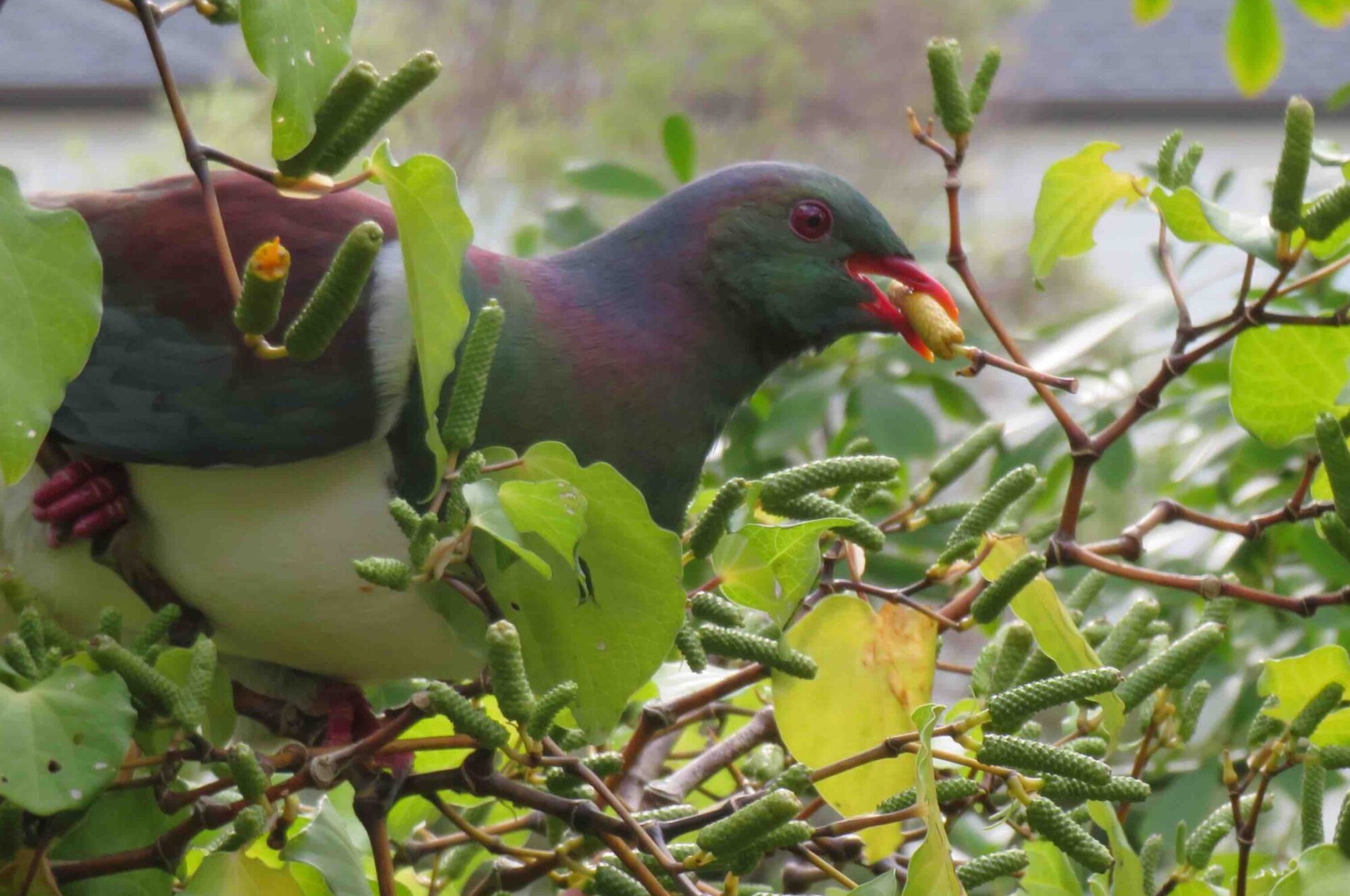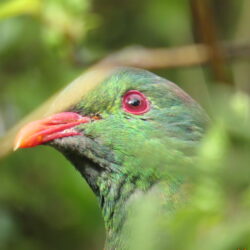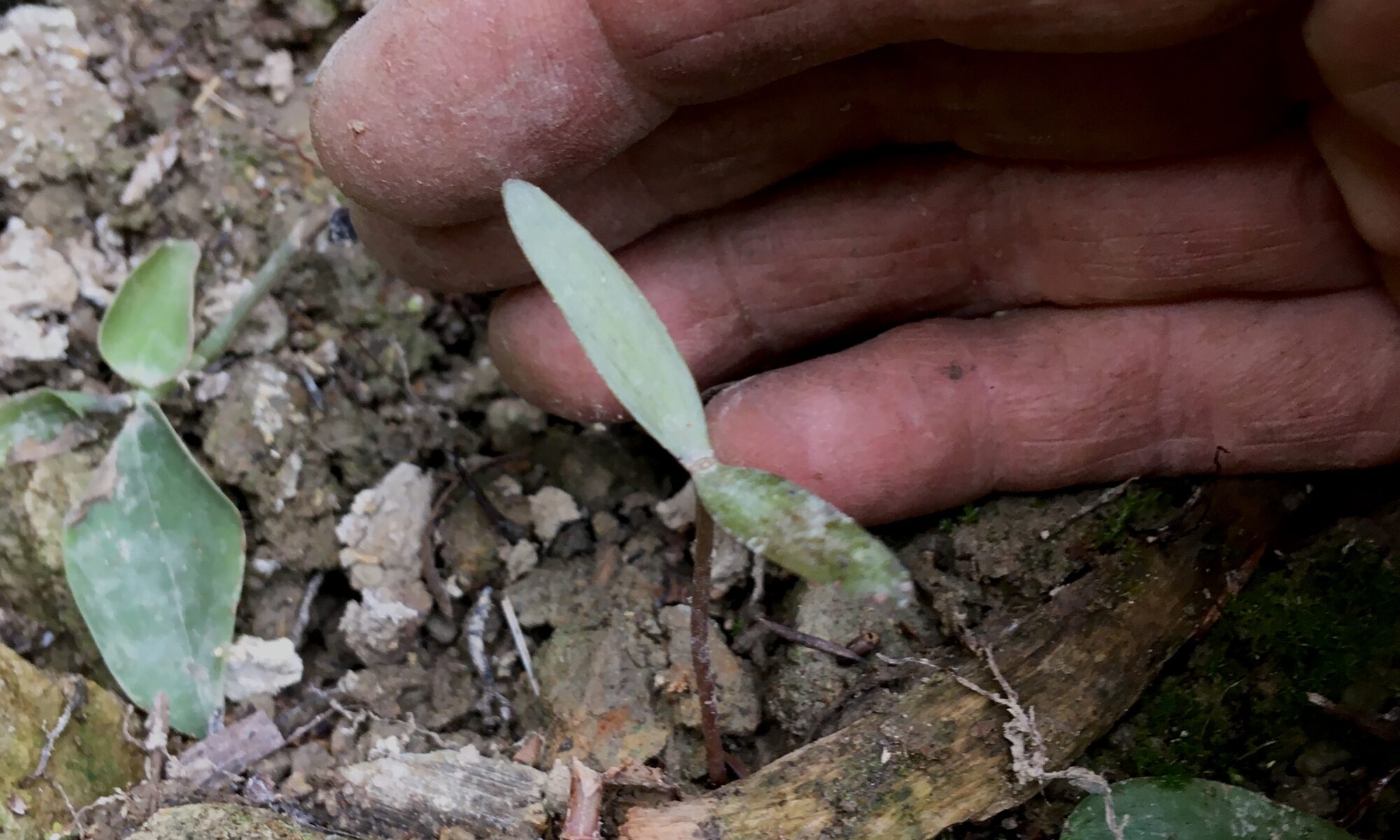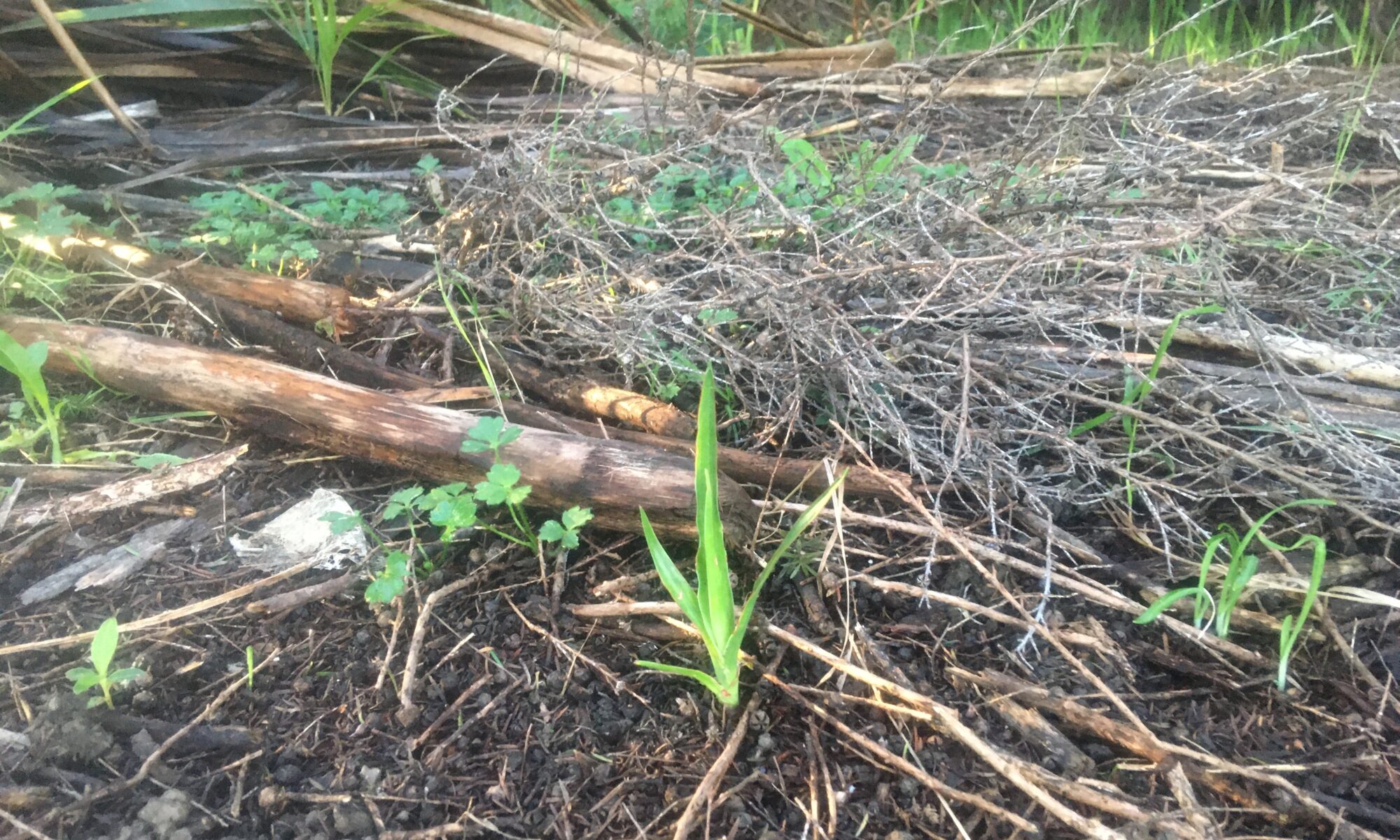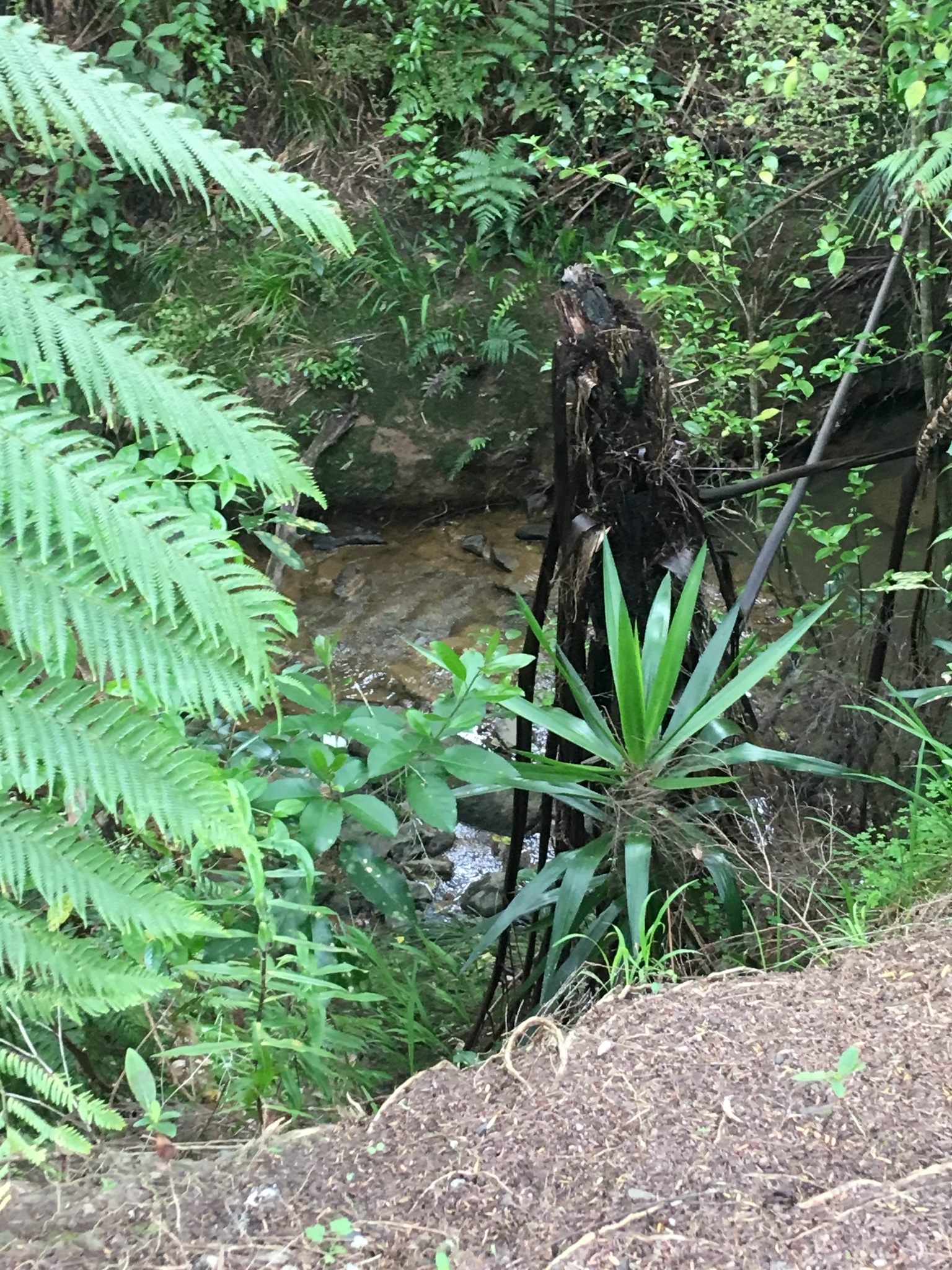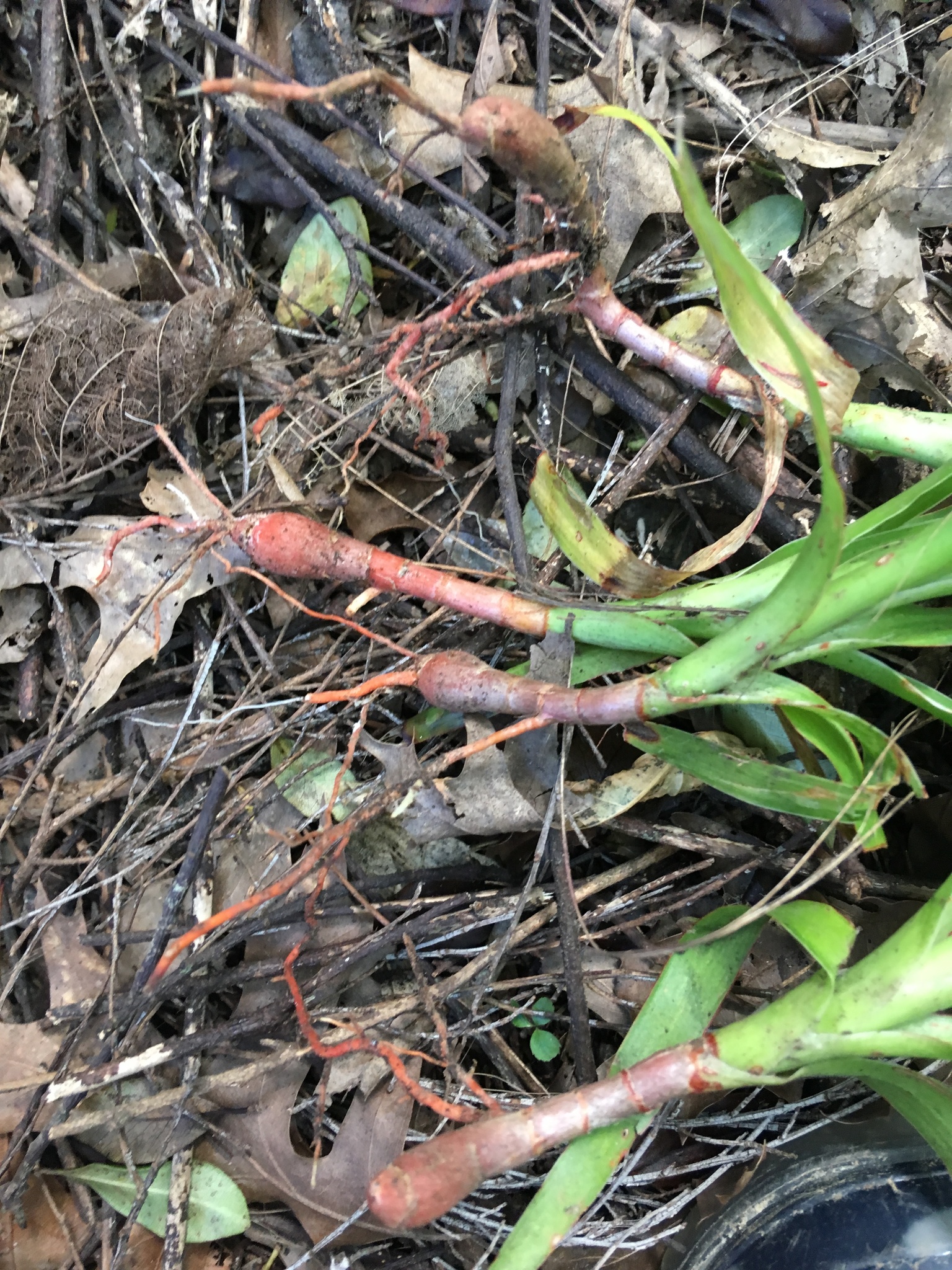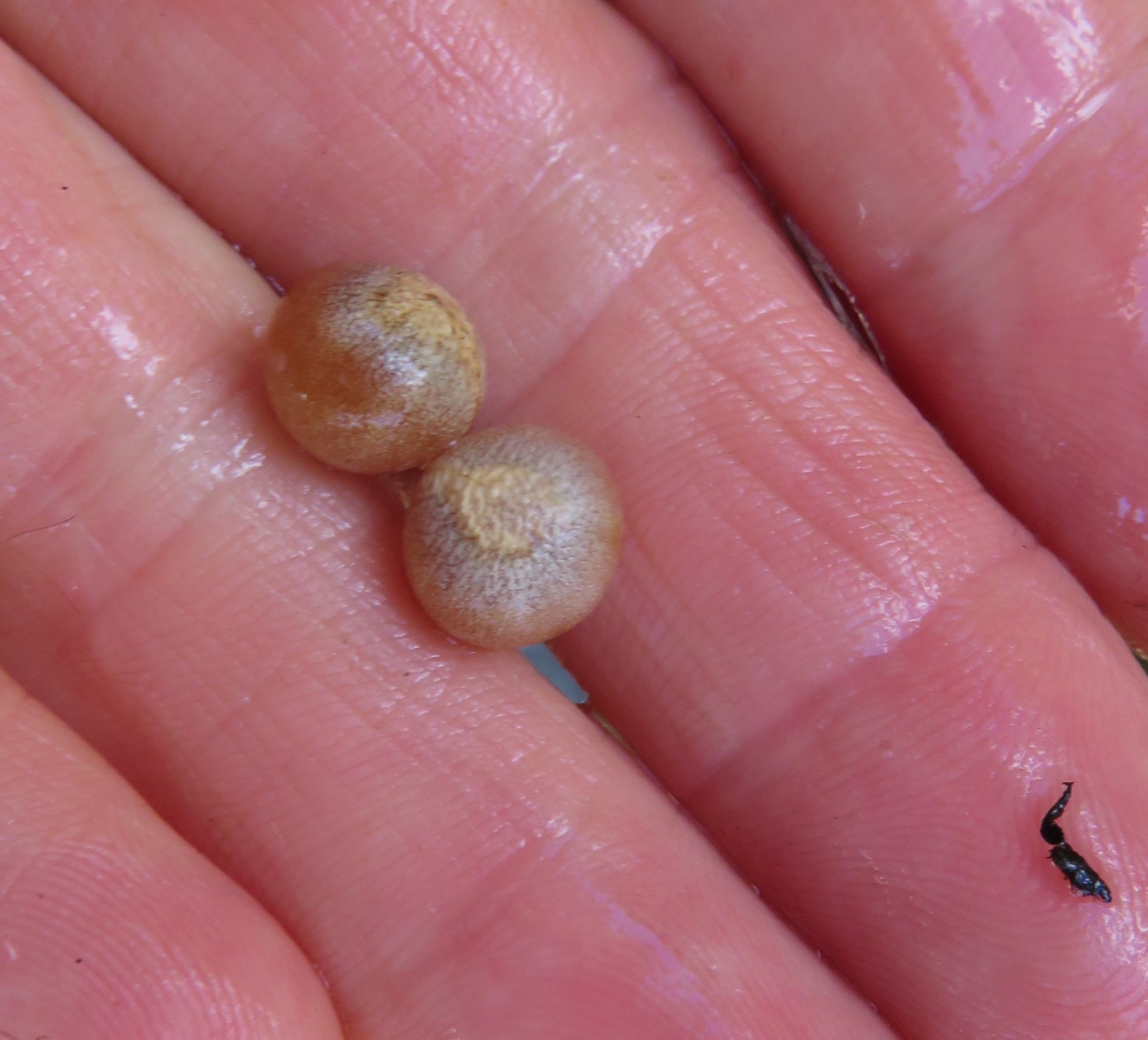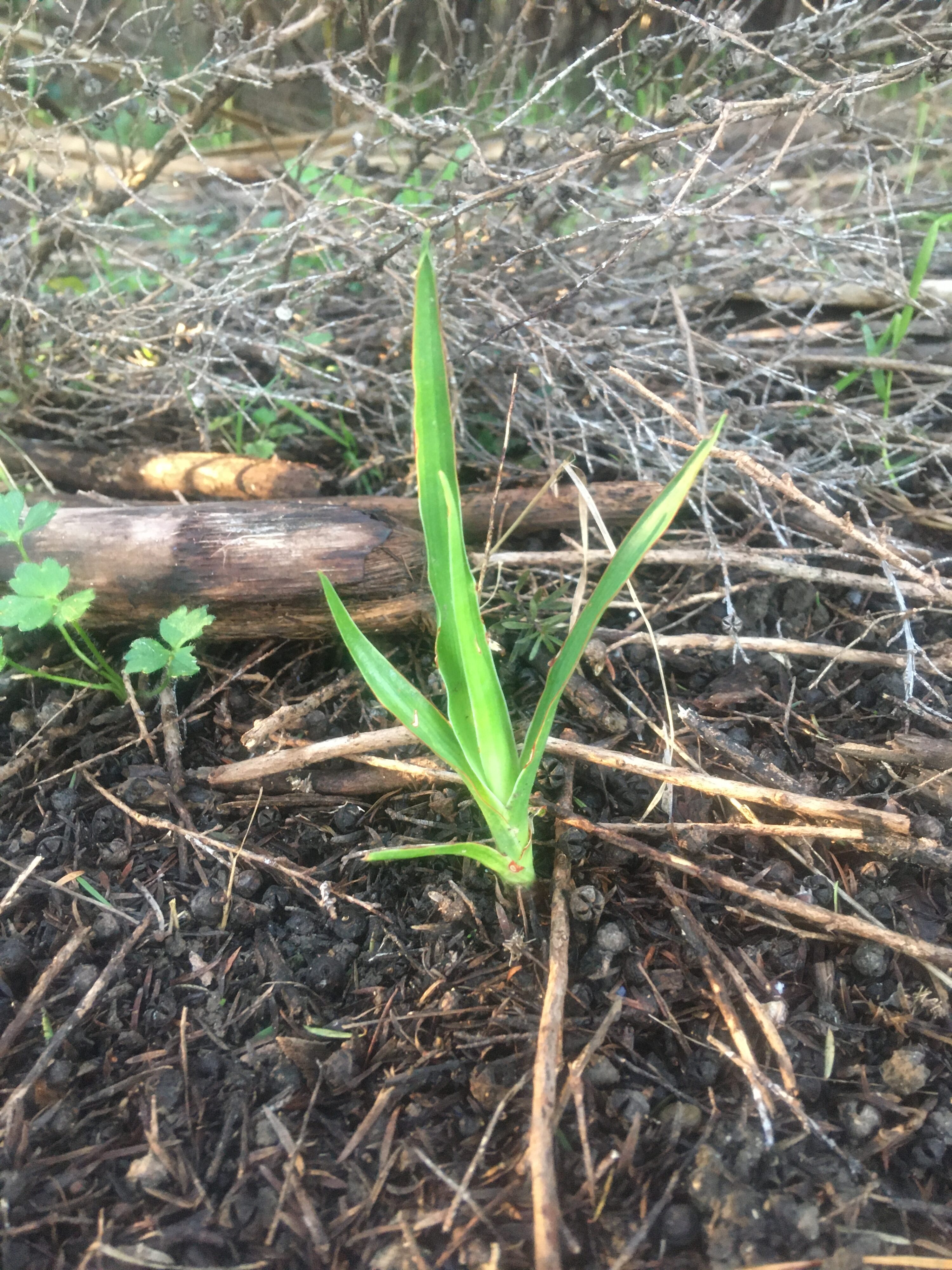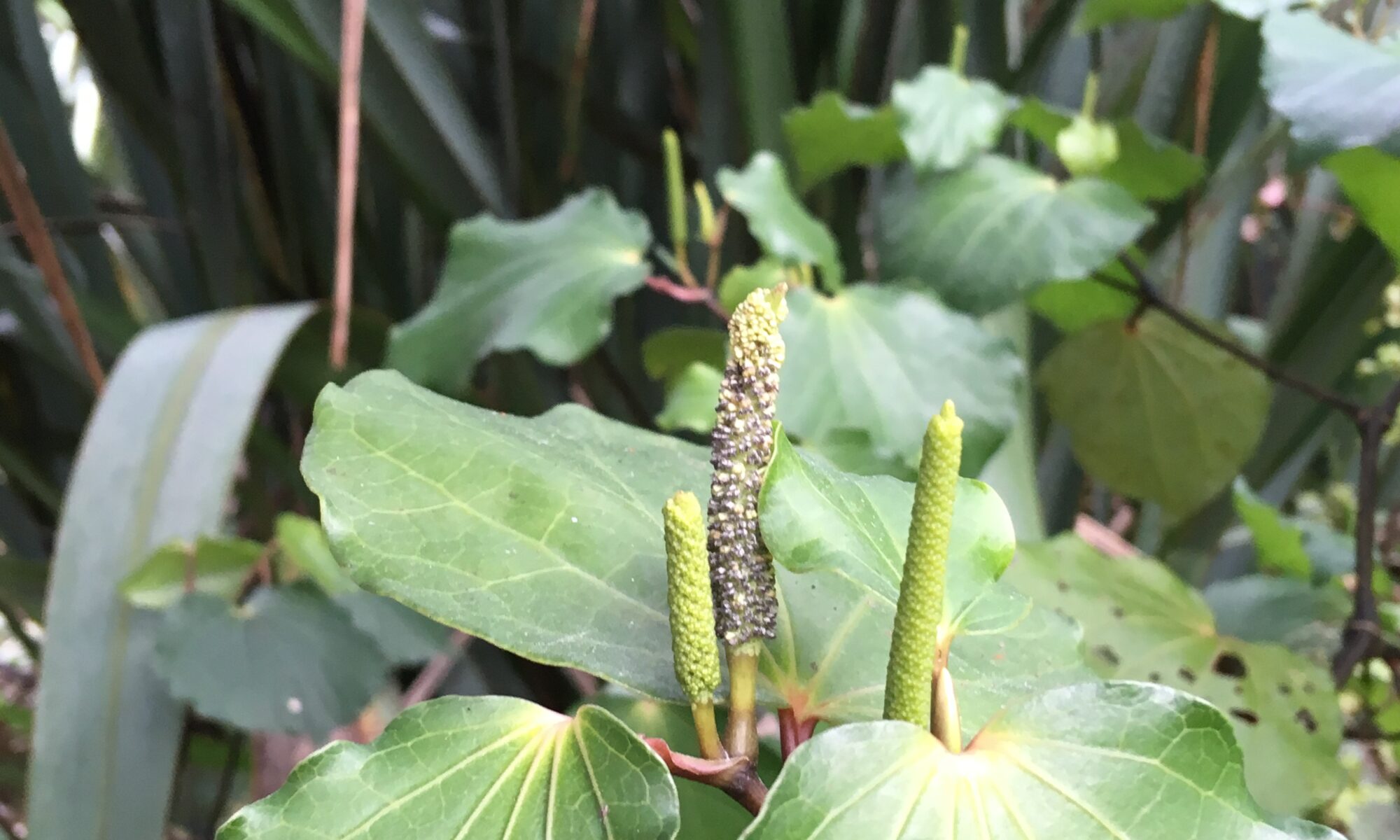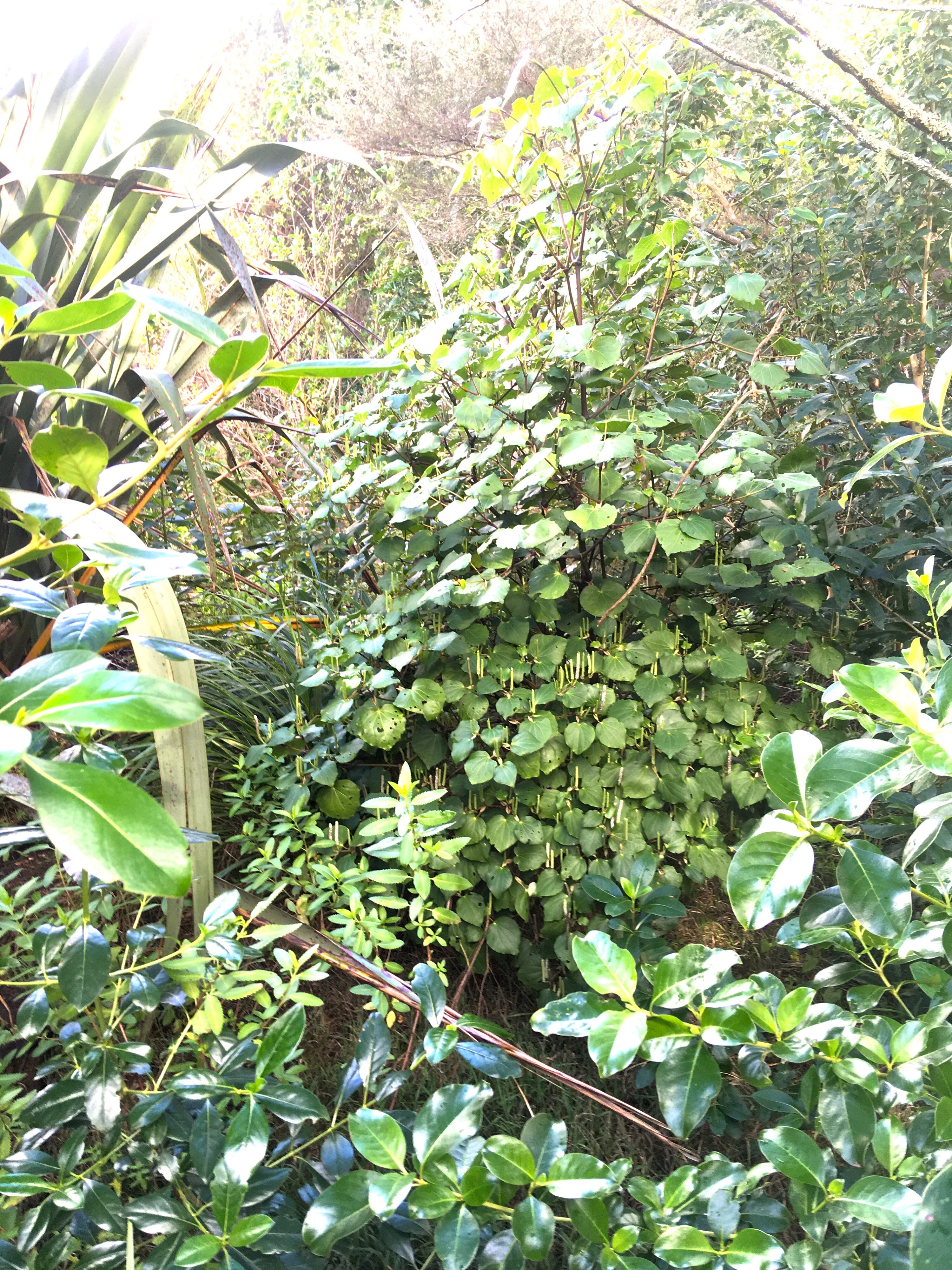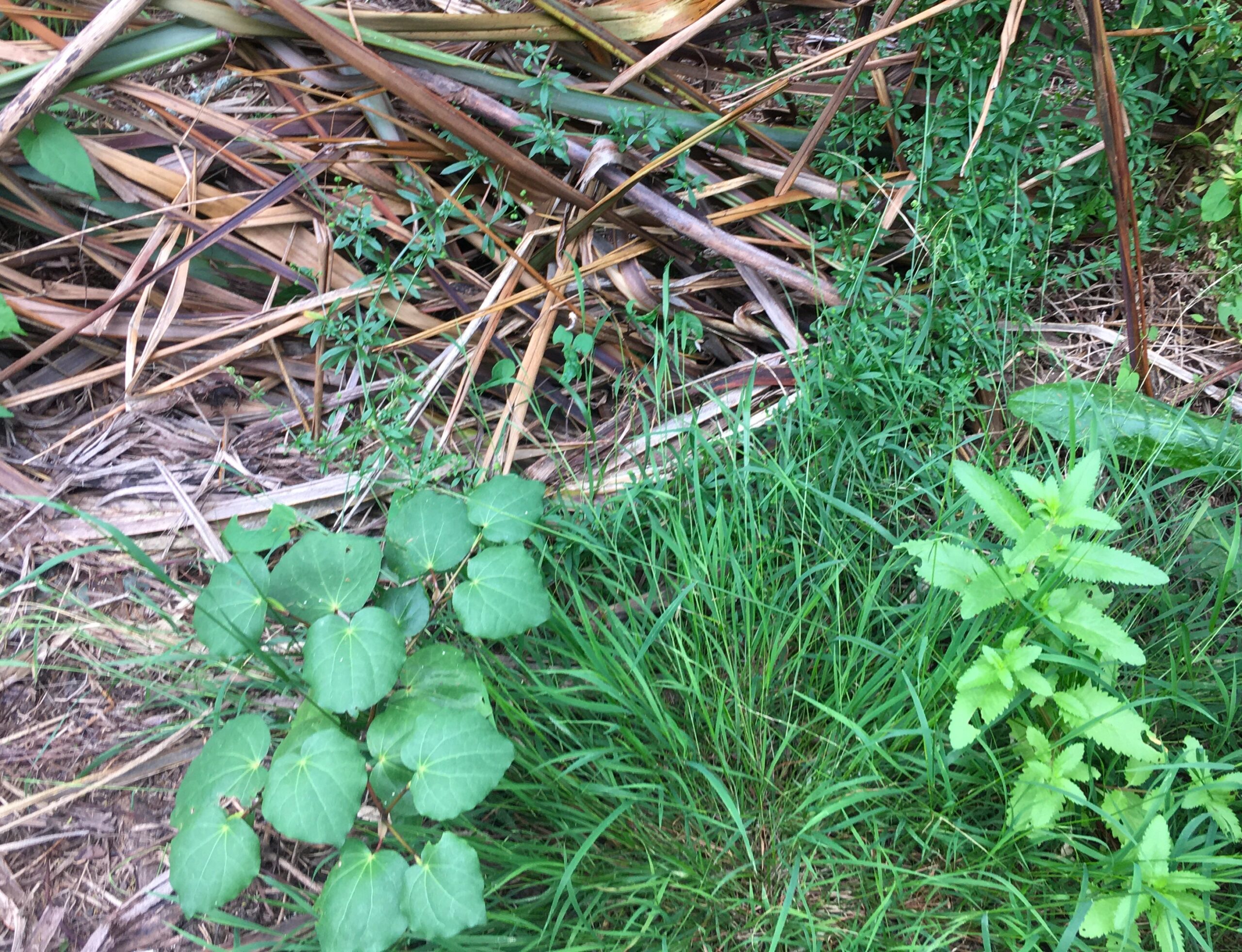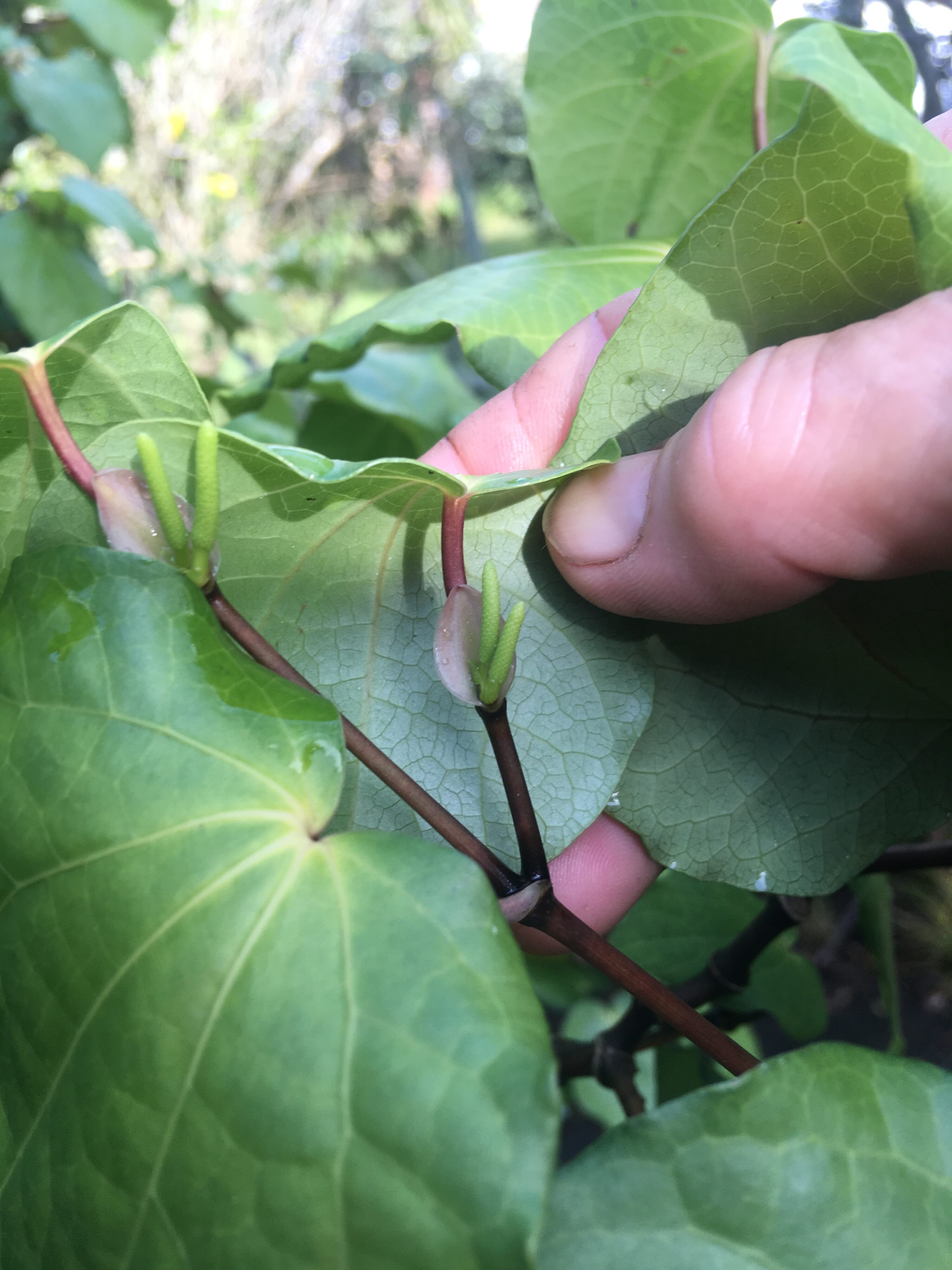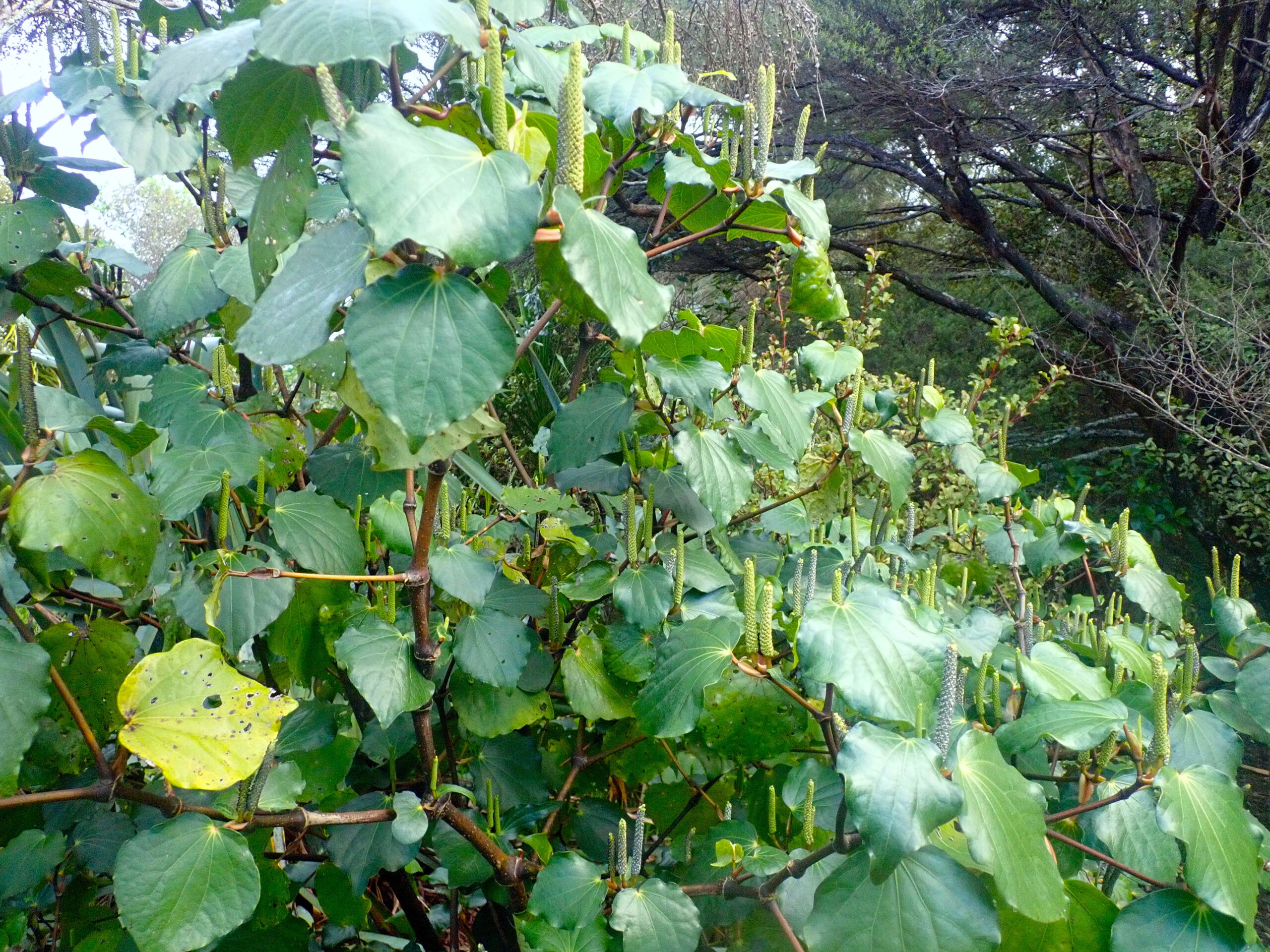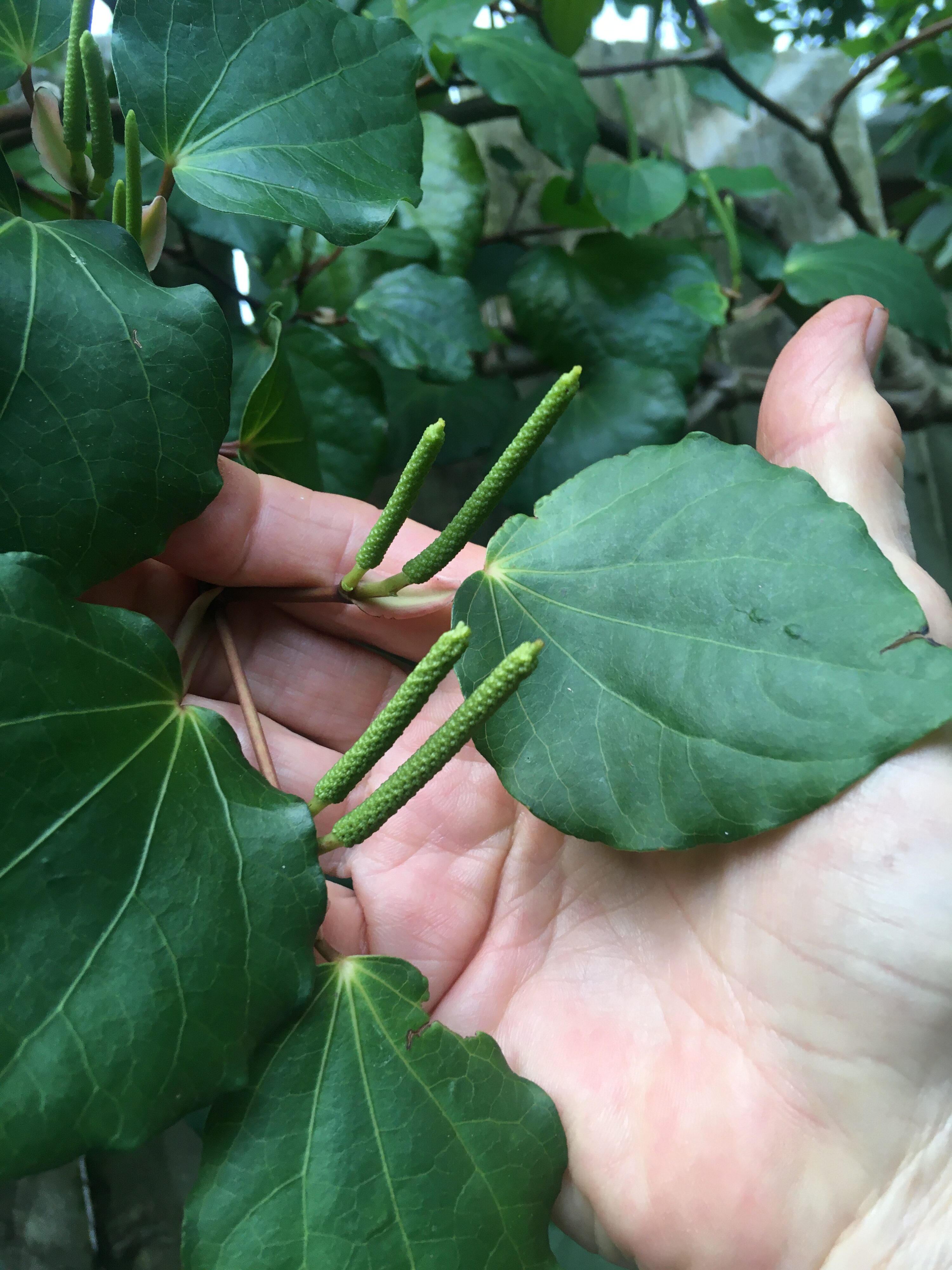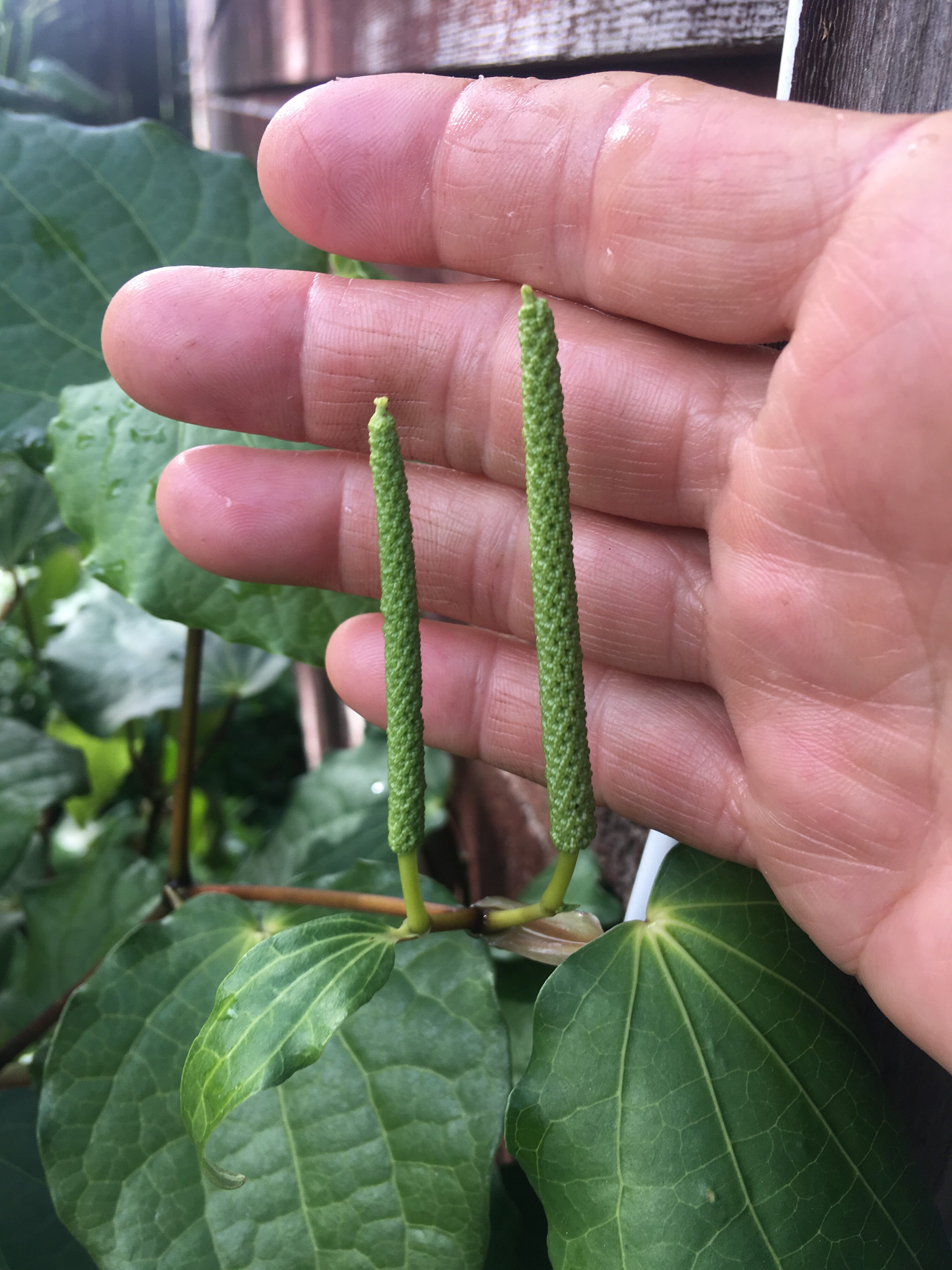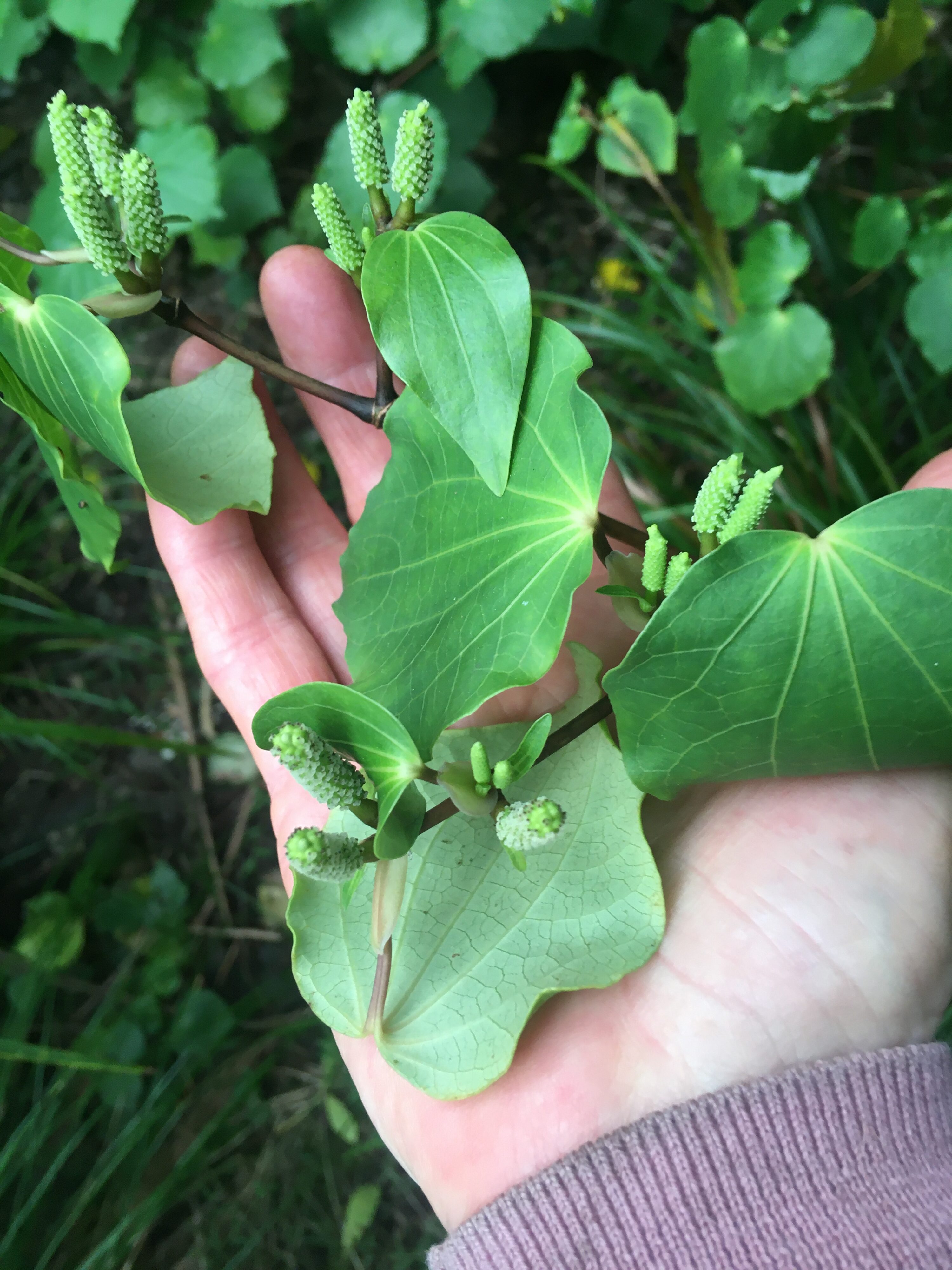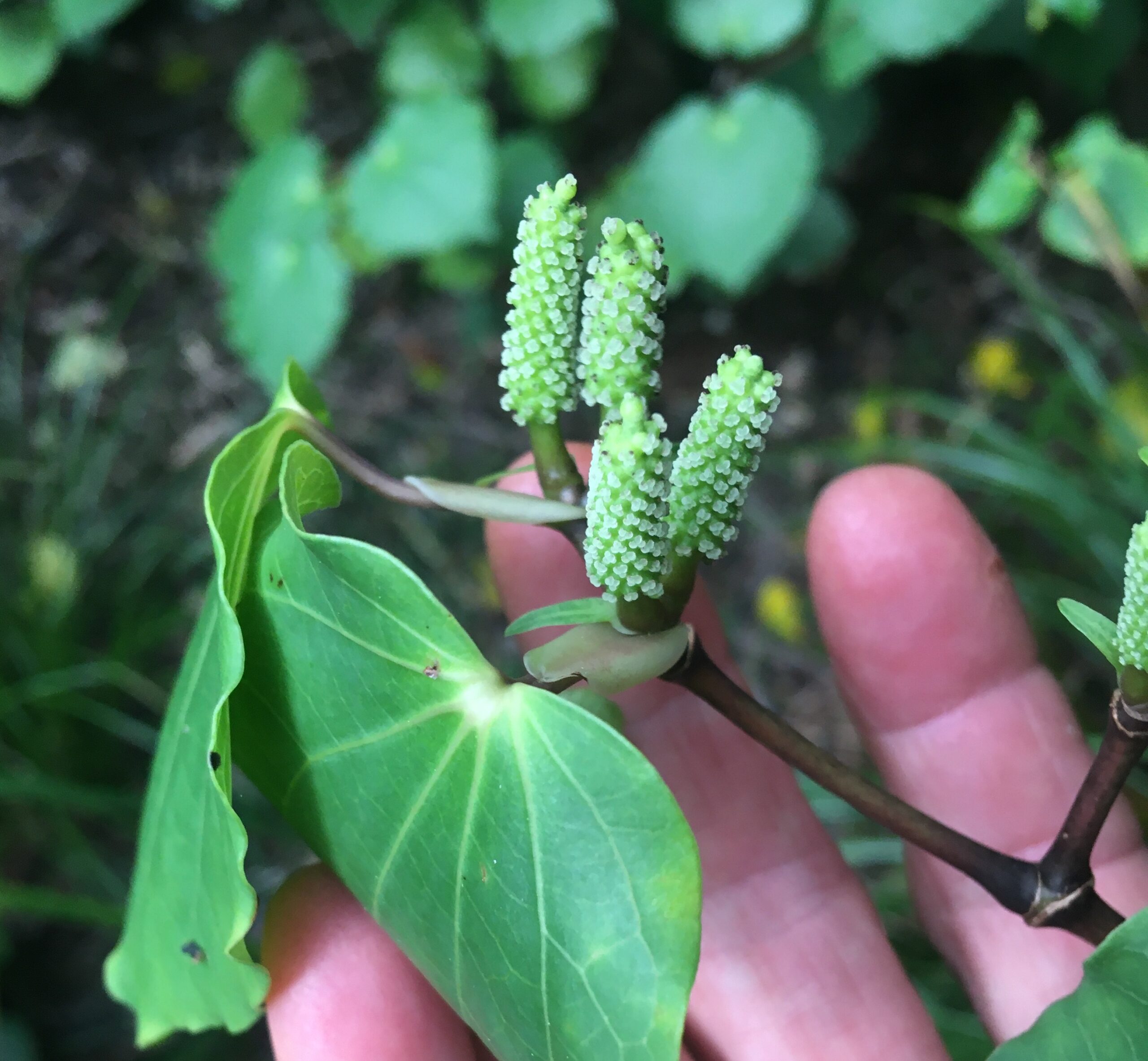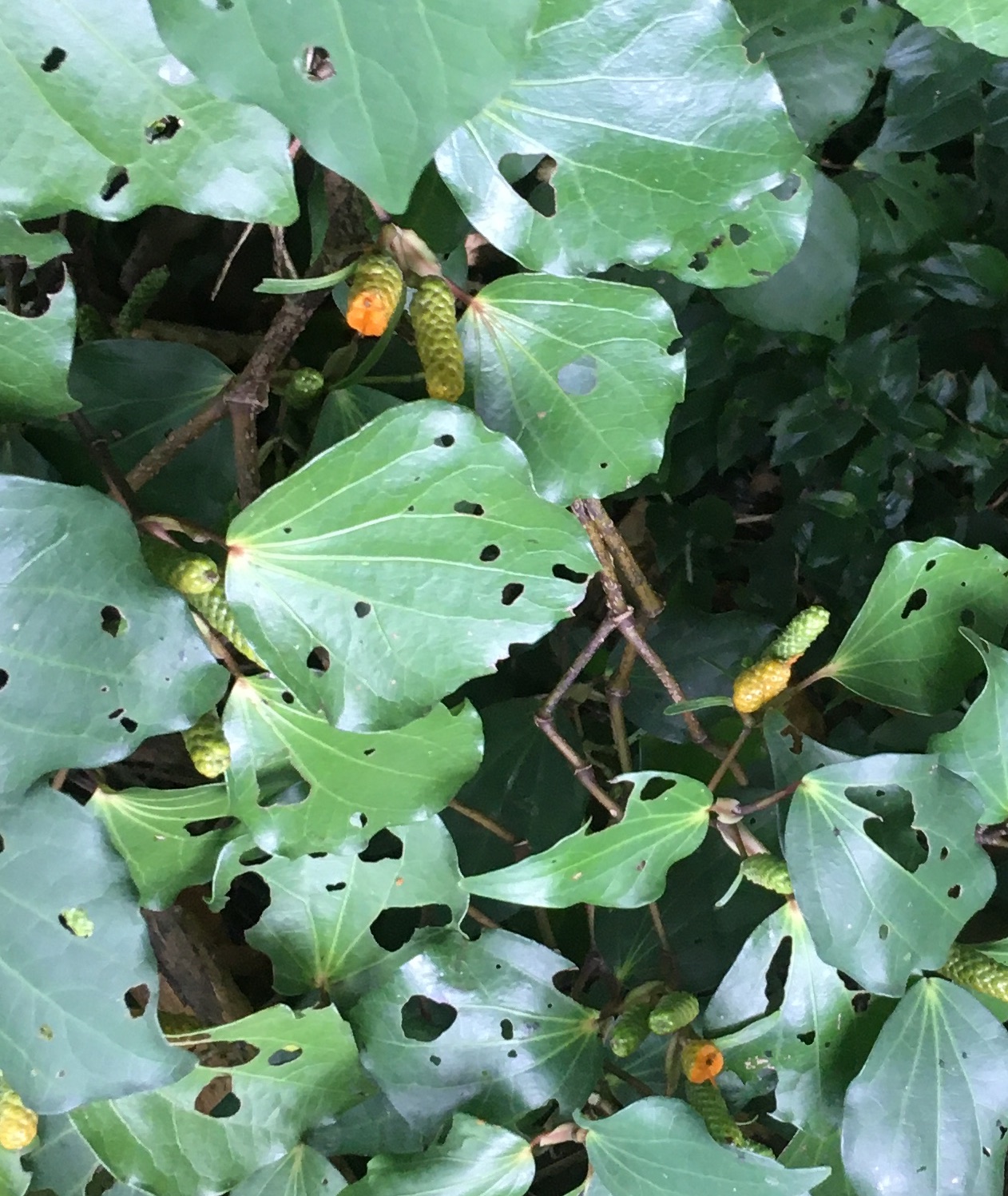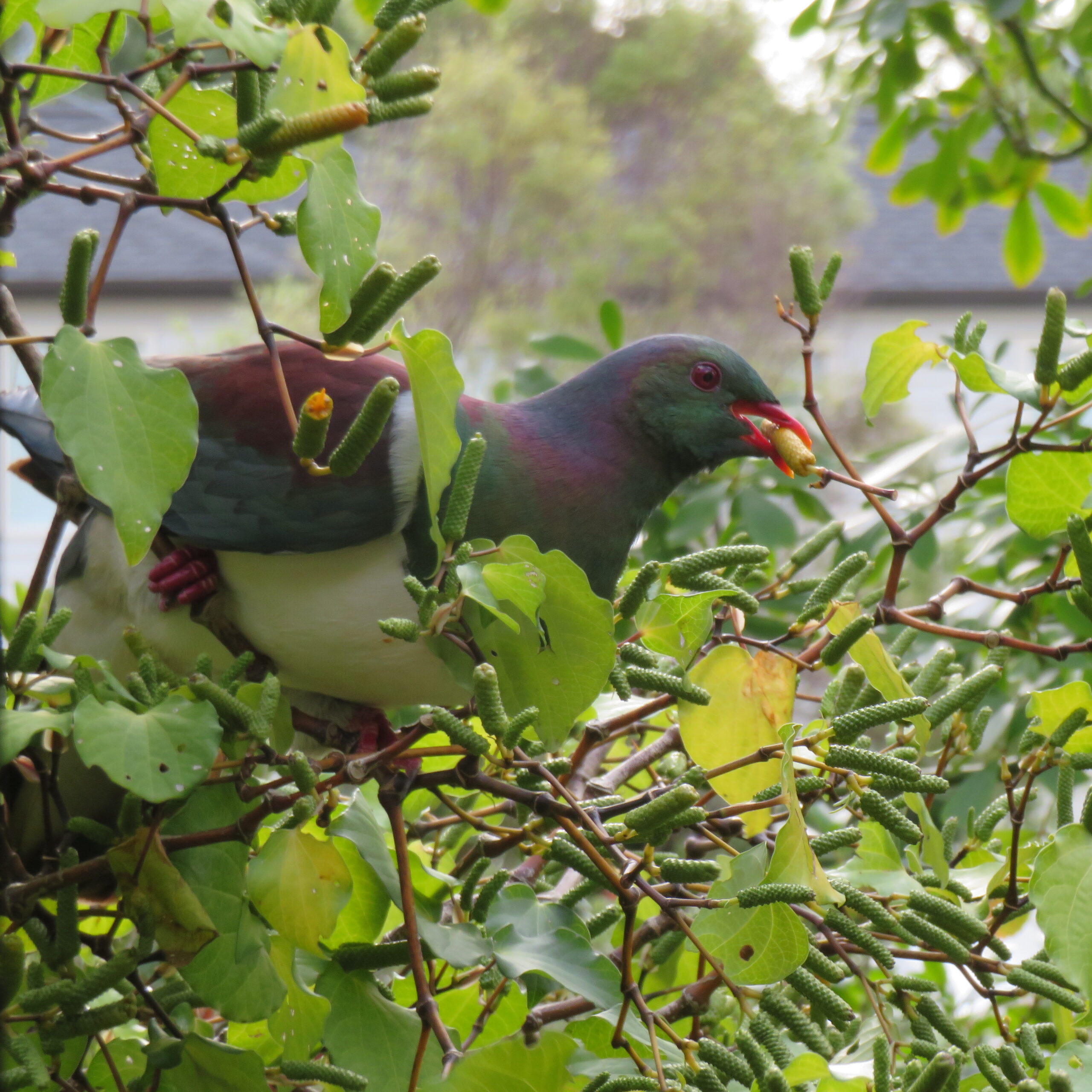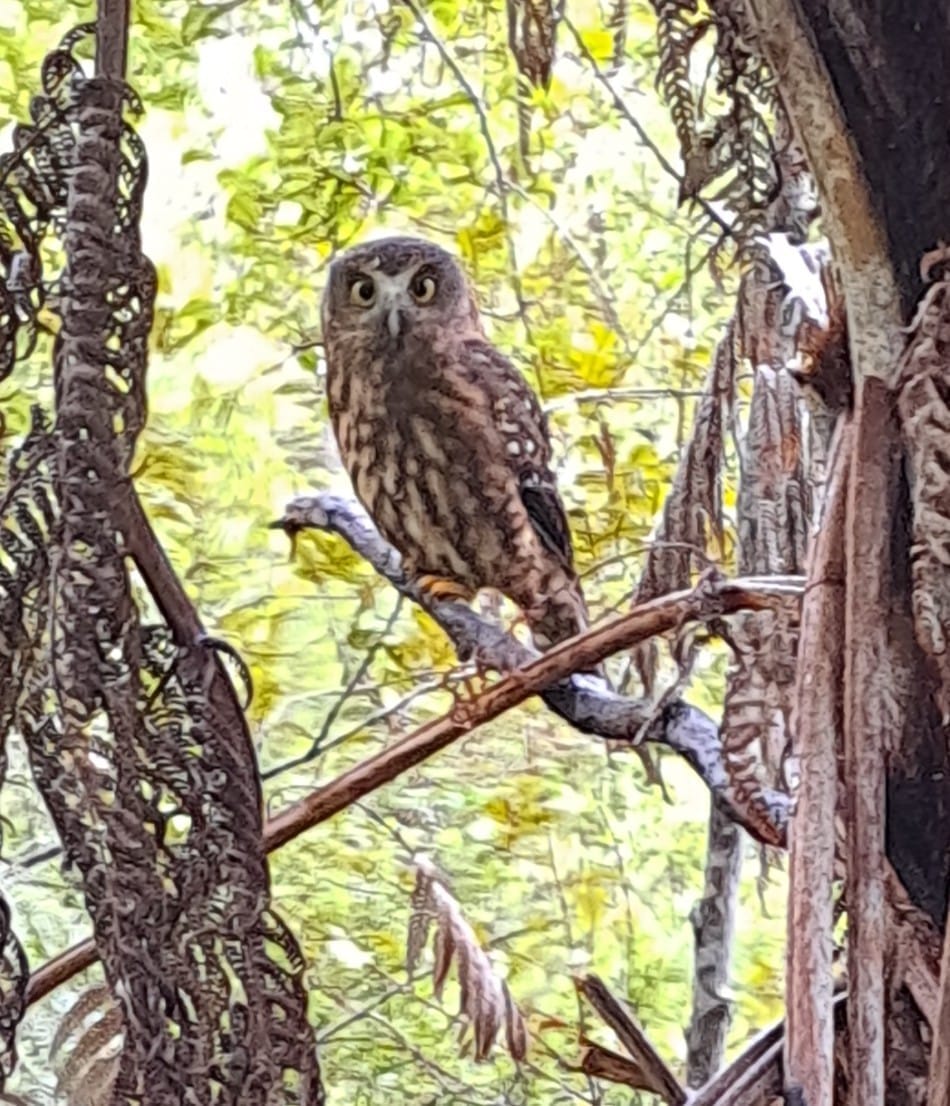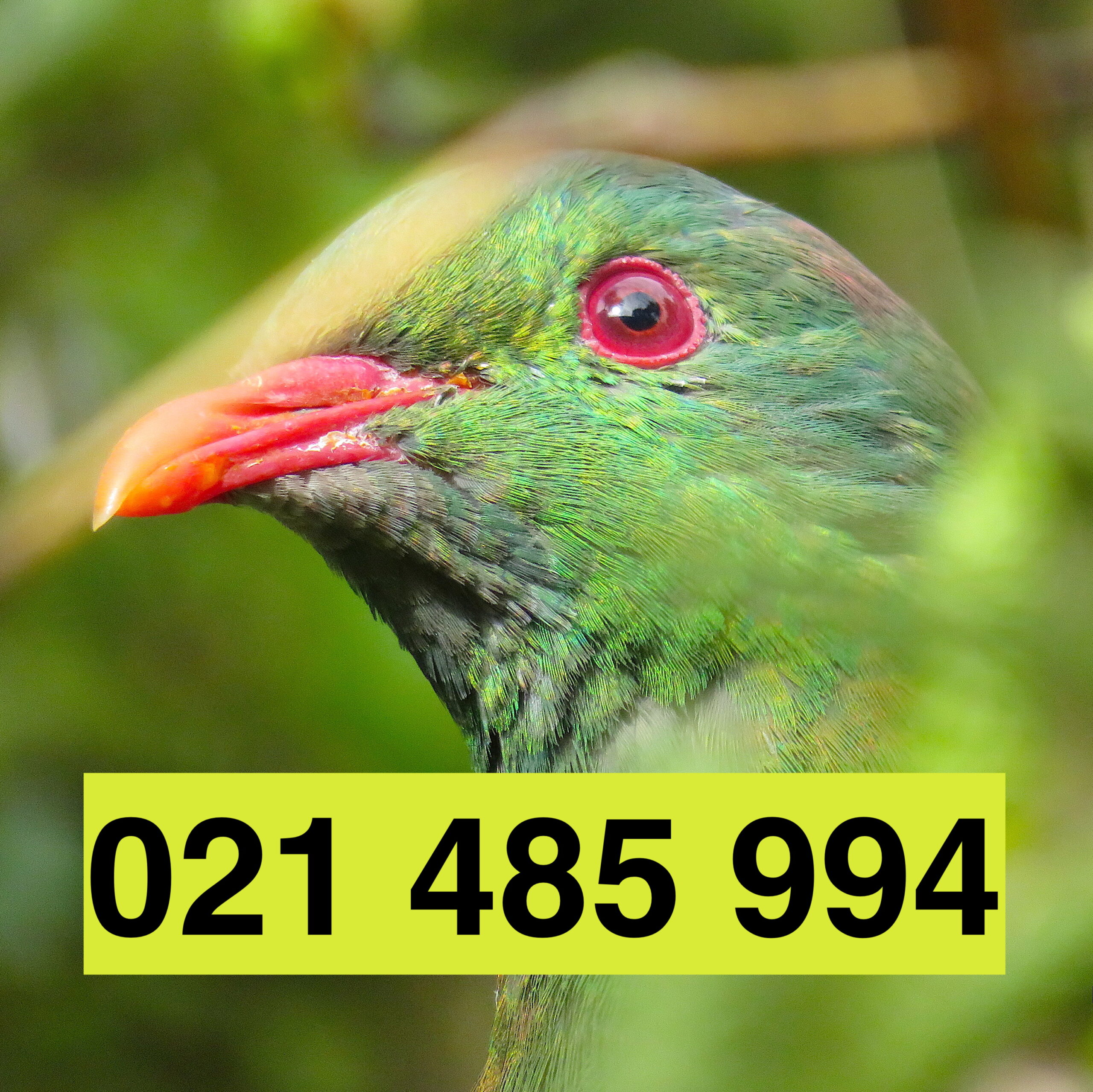Autumn and winter are my favourite times for restoration work. Everywhere native tree seedlings are popping up and, if recognised and protected, extend the wild habitats they spring from.
Manuka seedlings arise in bare sun-exposed clay, or as below, in manuka leaf litter on the outer edge of manuka “scrub”:
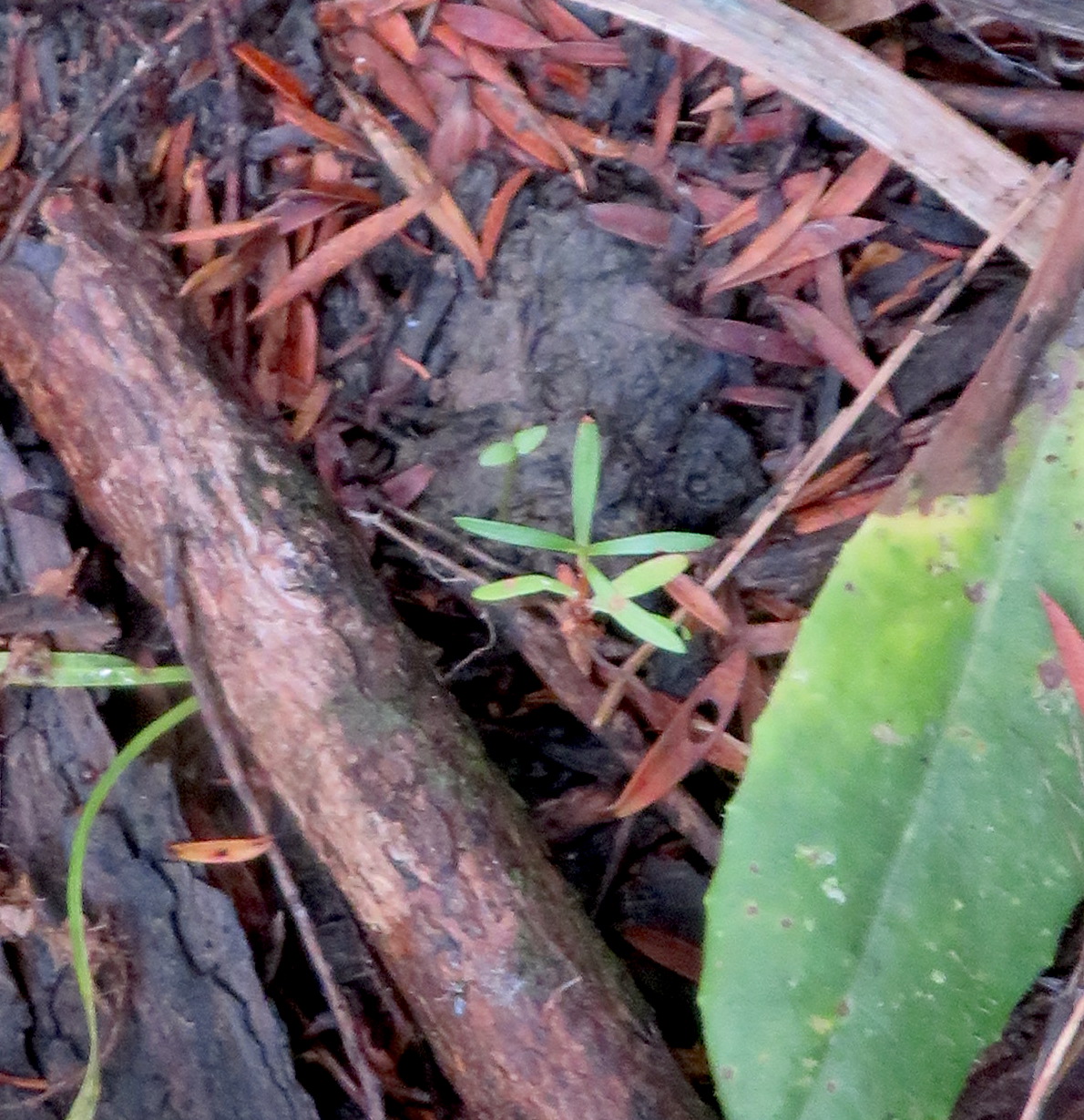
Karamu are abundant anywhere blackbirds visit
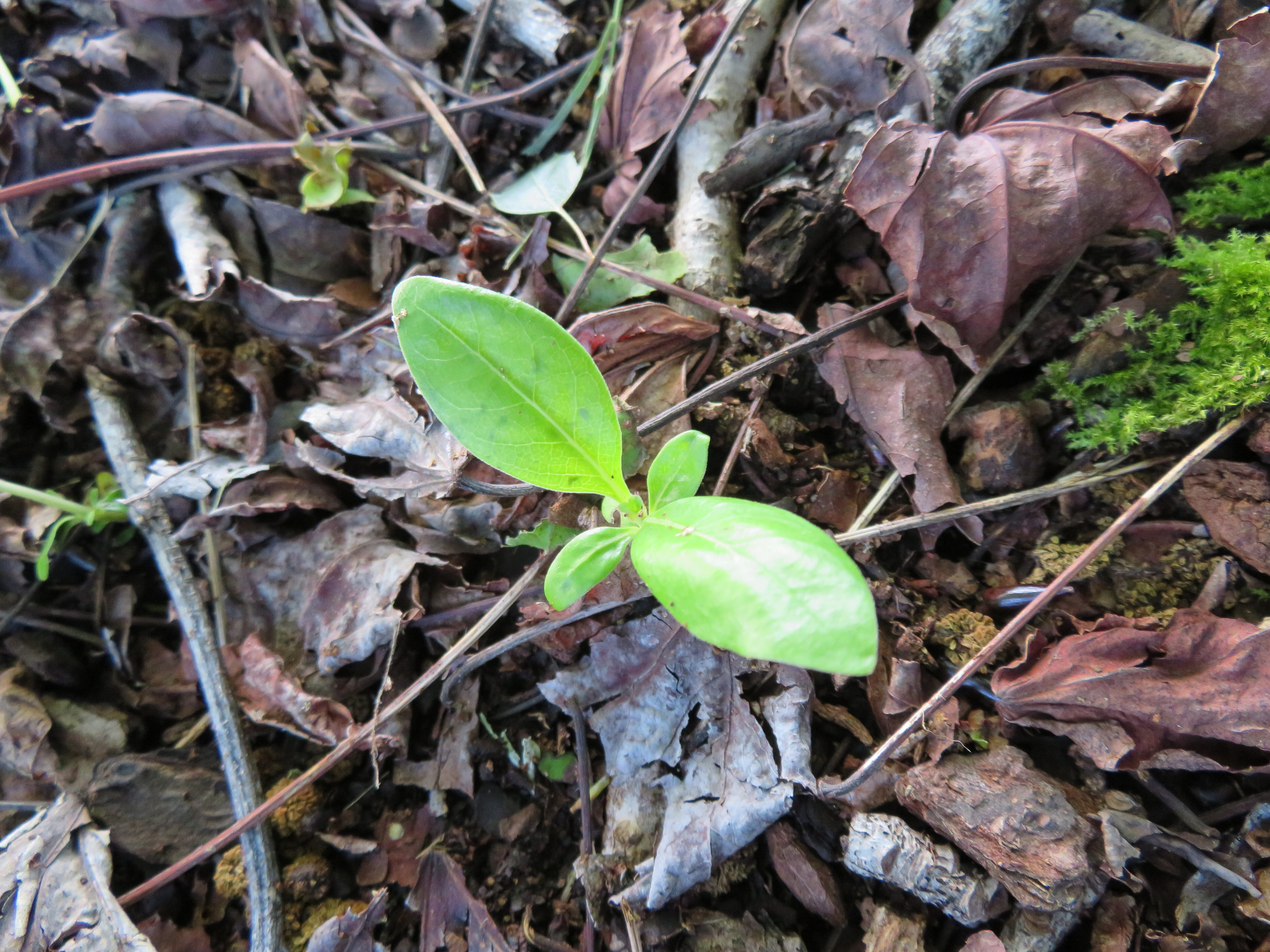
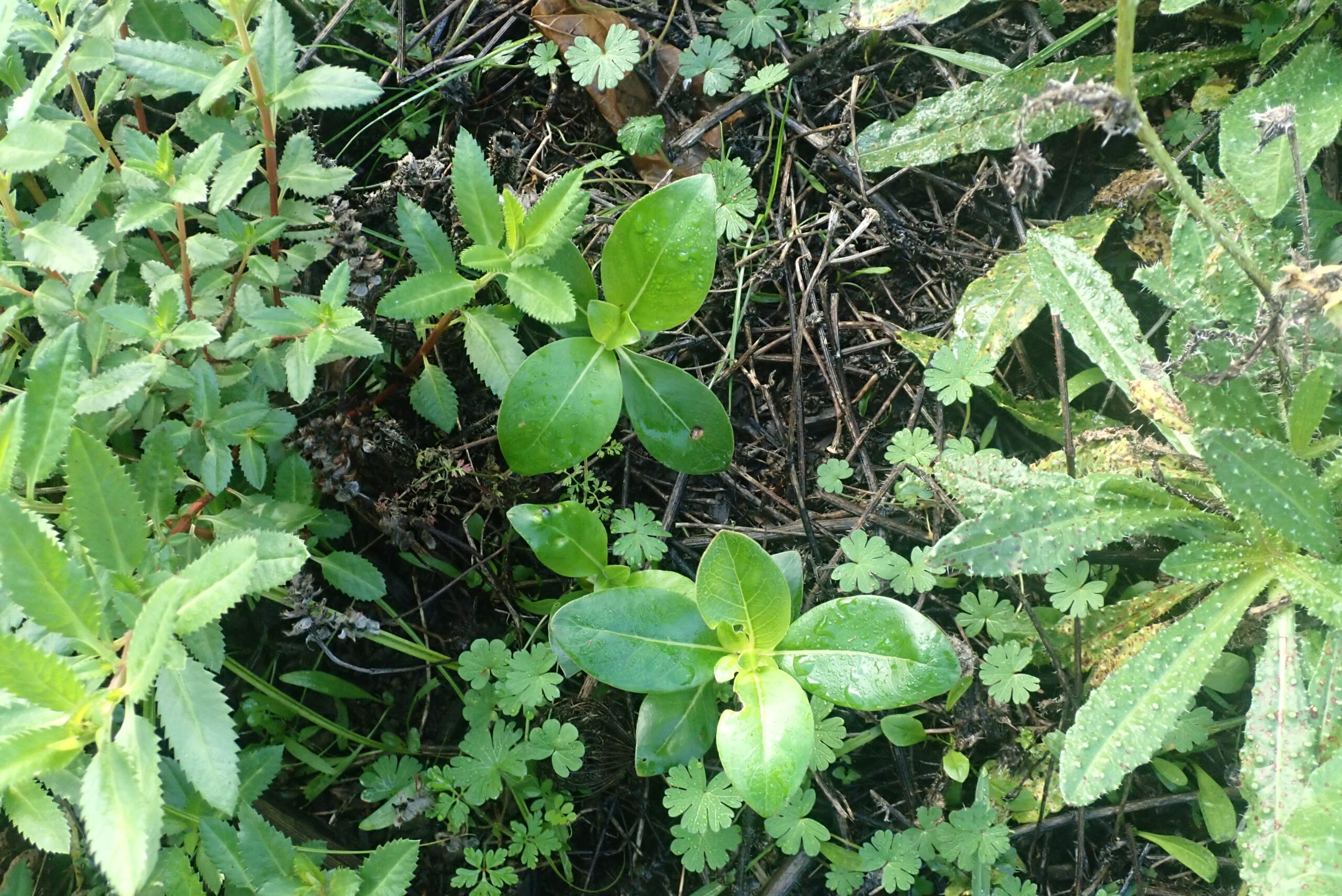
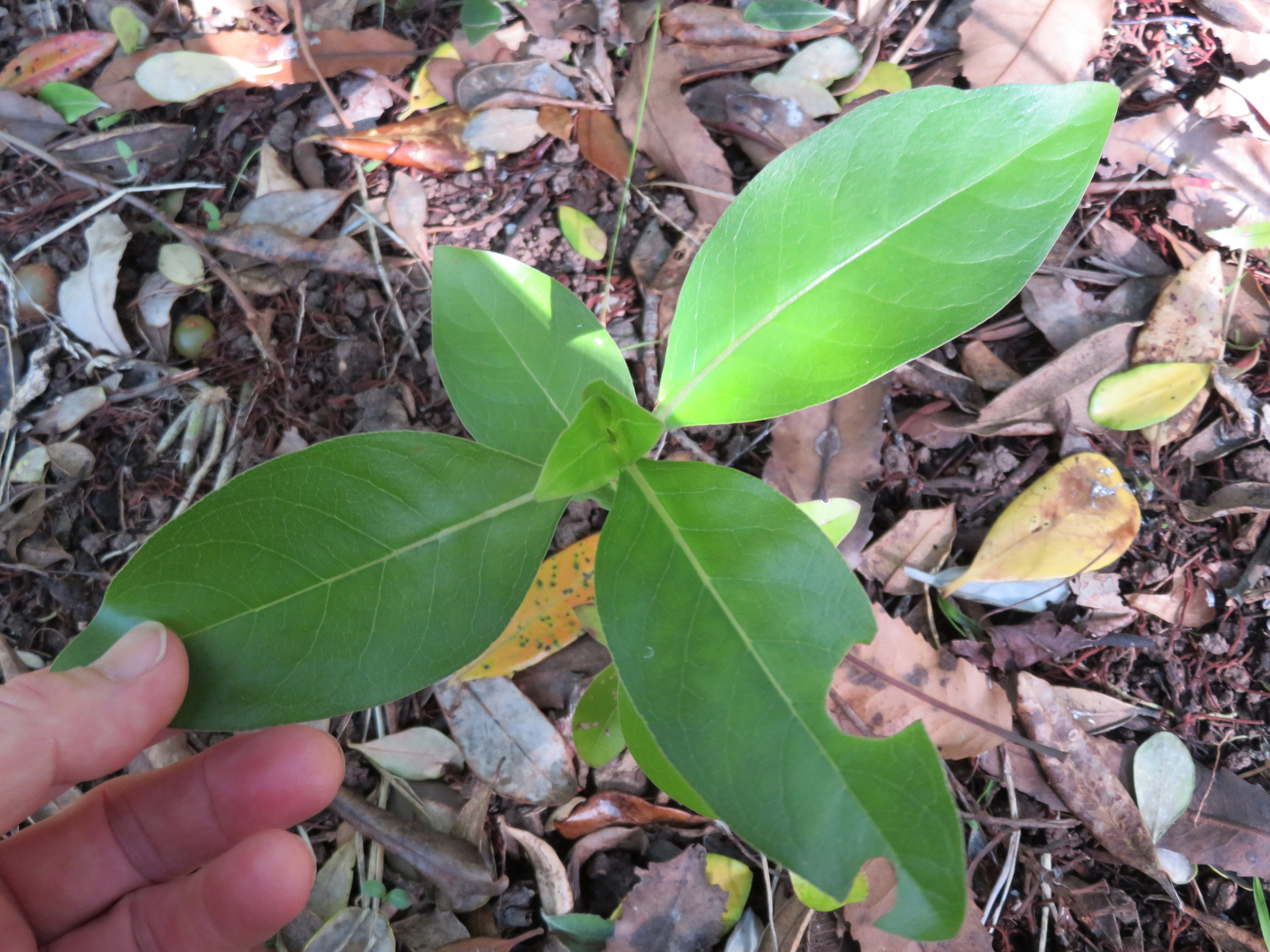
Totara, houpara and mapou appear under trees and among tall leafy plants (including weeds). These two mapou are under a mahoe tree
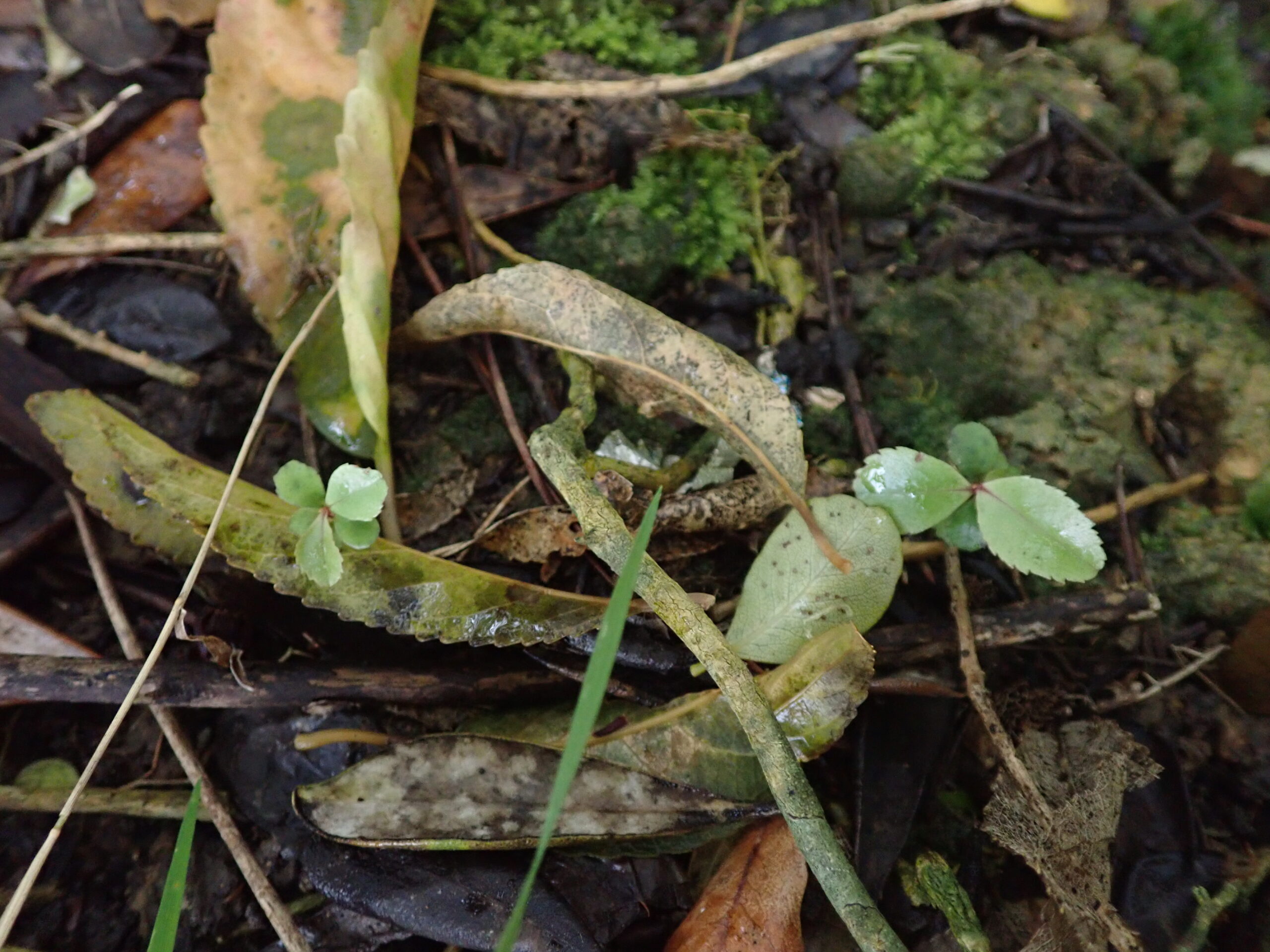
and occasionally, even in highly landscaped gardens within bird-reach of a forest fragment, we find the fern-like tanekaha seedling.
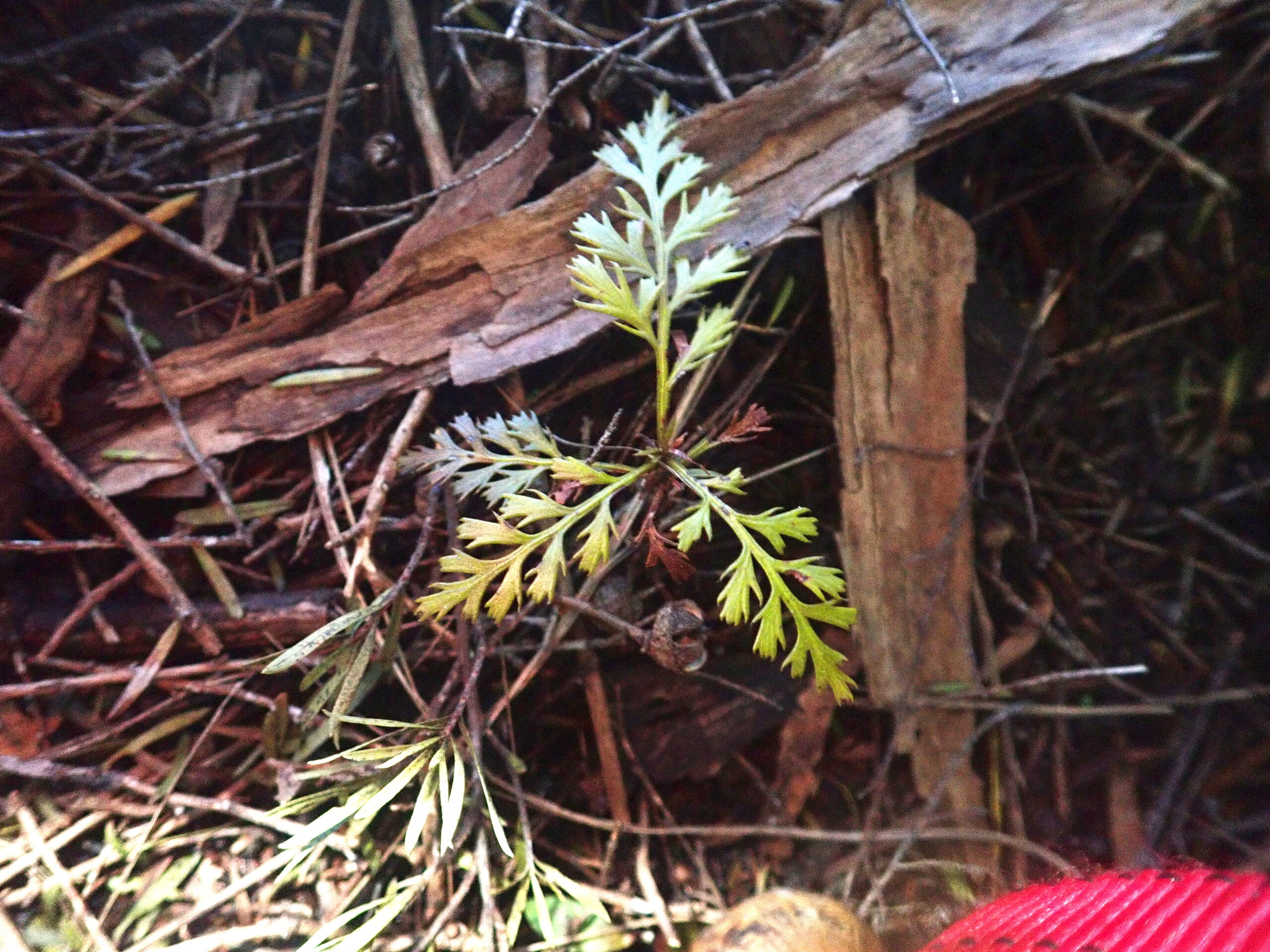
The tanekaha below is probably 2 or 3 years old, (with two little karamu seedlings above it).
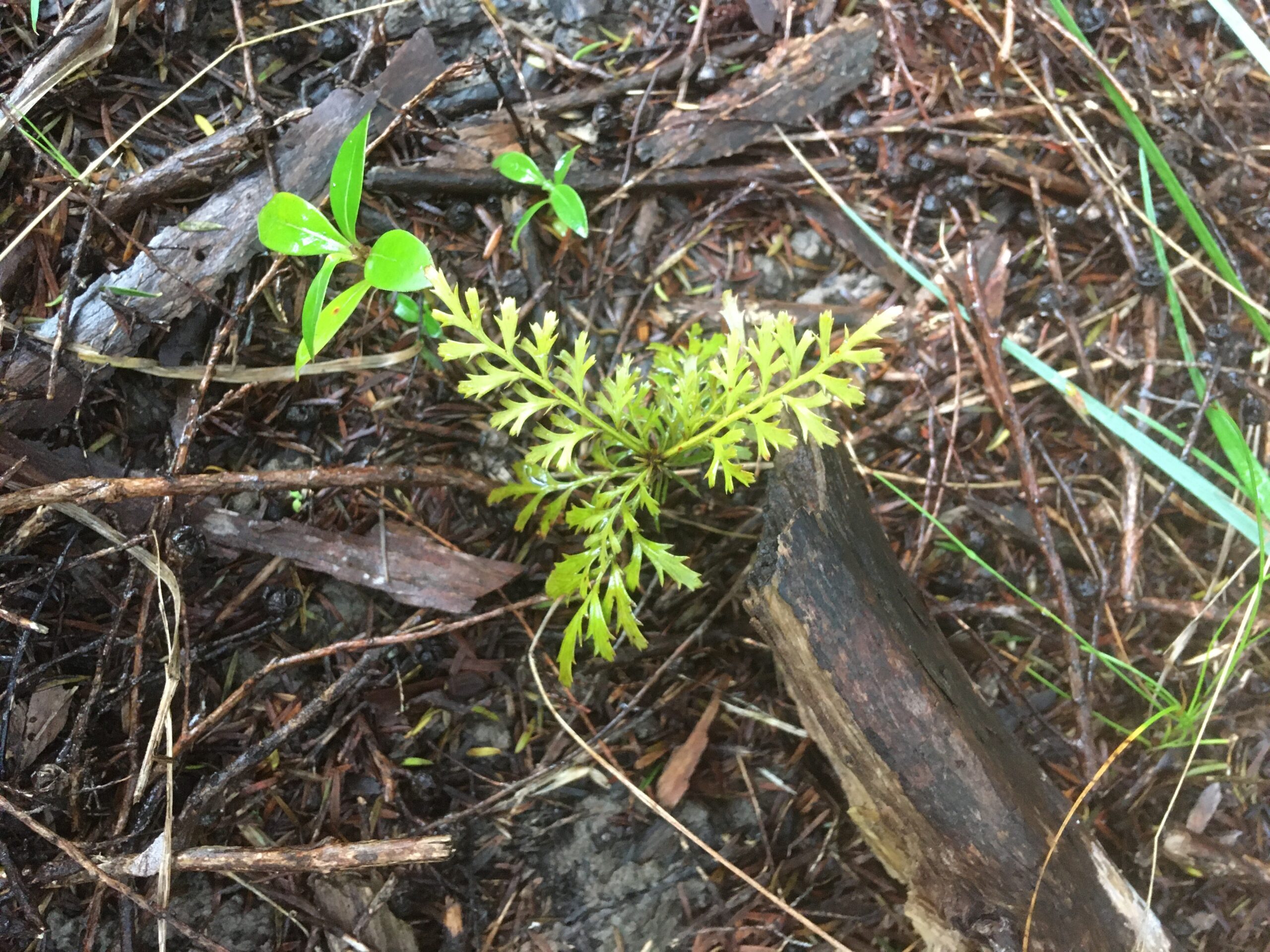
On the edges of kauri forest fragments, kauri seedlings are scattered wherever the surface layer of humus (rotted leaf litter) has lain undisturbed for several months.
This one is no surprise – in a deep bed of leaf litter beneath a kauri and a tanekaha. You can see the smooth shallow hollows in the scales of fallen kauri cones that fell here, (as well as the frilly-edged stem-tips of tanekaha – which we usually refer to as leaves, though they are technically not leaves but stem-tips) (For extra points, spot the two tiny green kawakawa seedlings:)
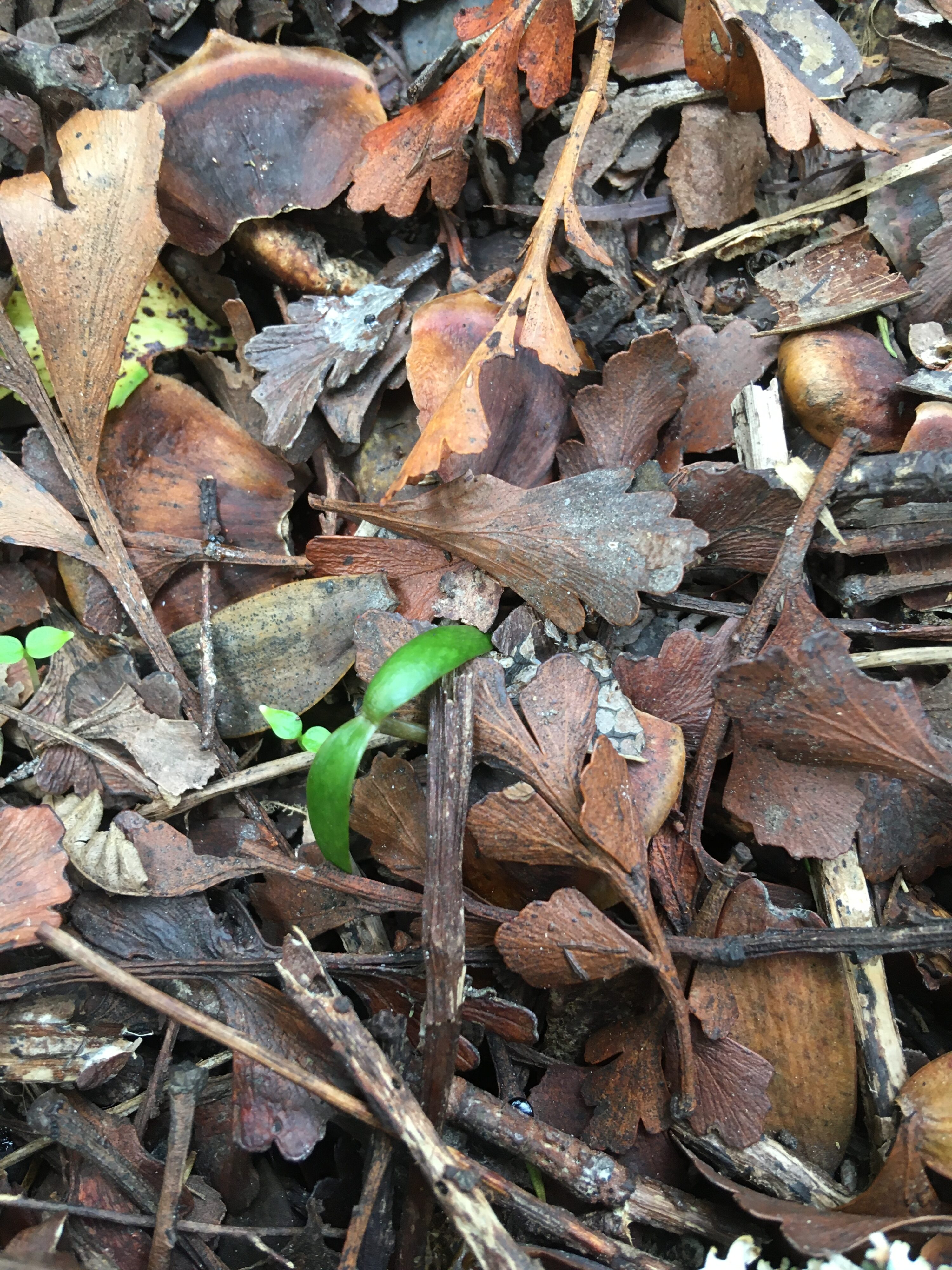
But kauri can germinate in many types of surface, even bare clay after construction, esecially if there is a bit of organic debris to feed and shelter them.
It’s hard to believe that each giant kauri tree in our remaining forest fragments grew from simple and unassuming seedlings like these.
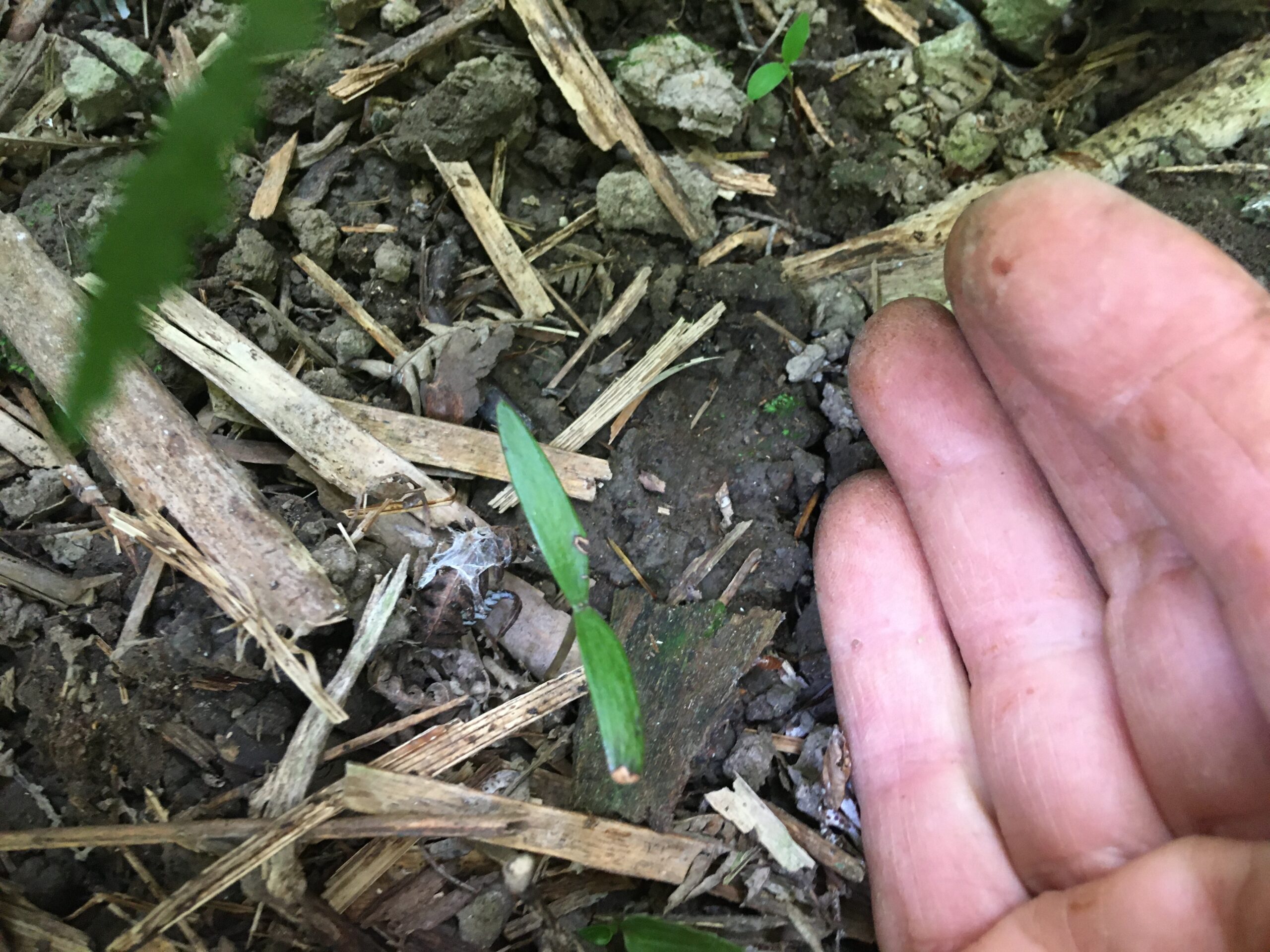
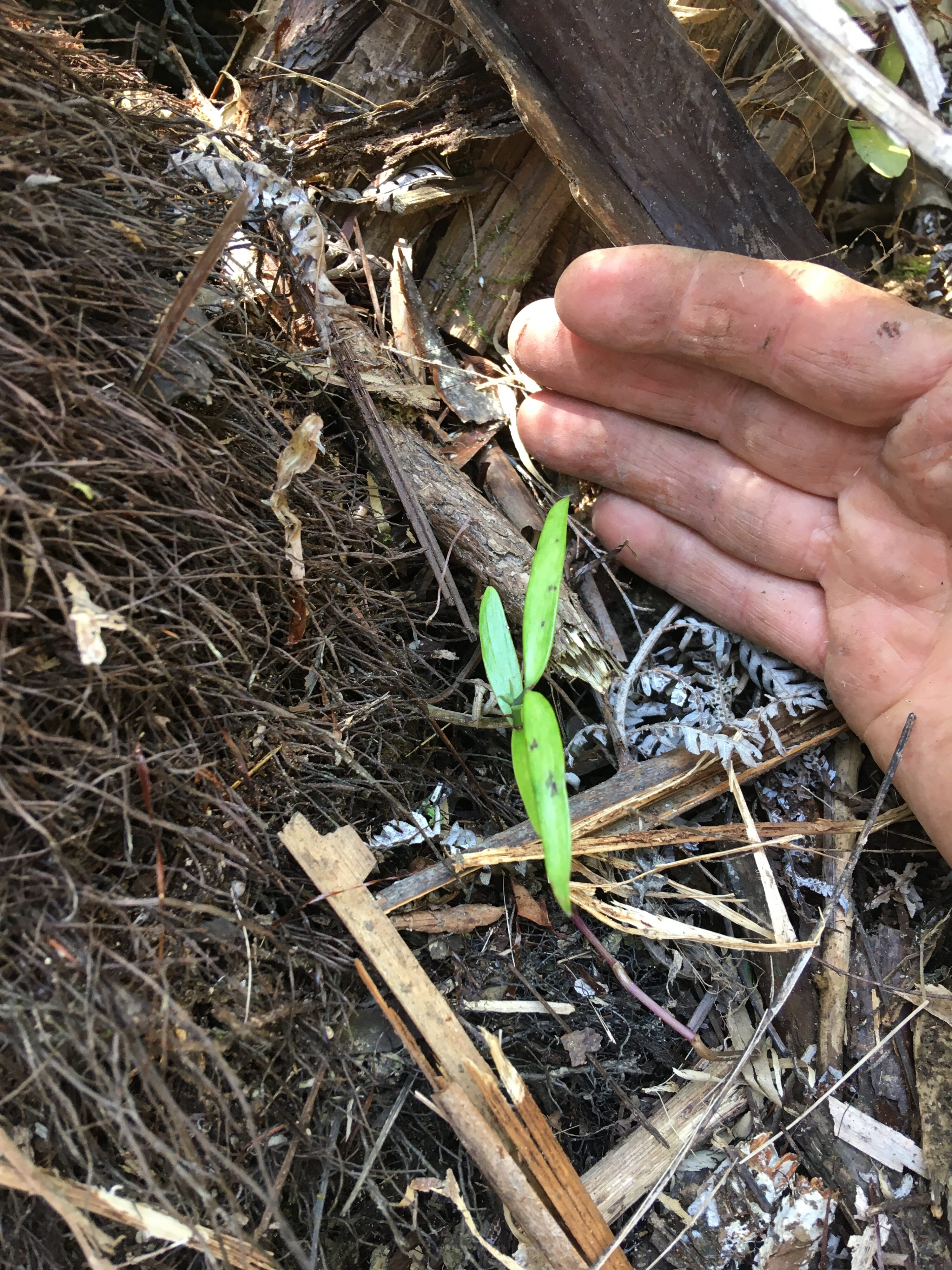
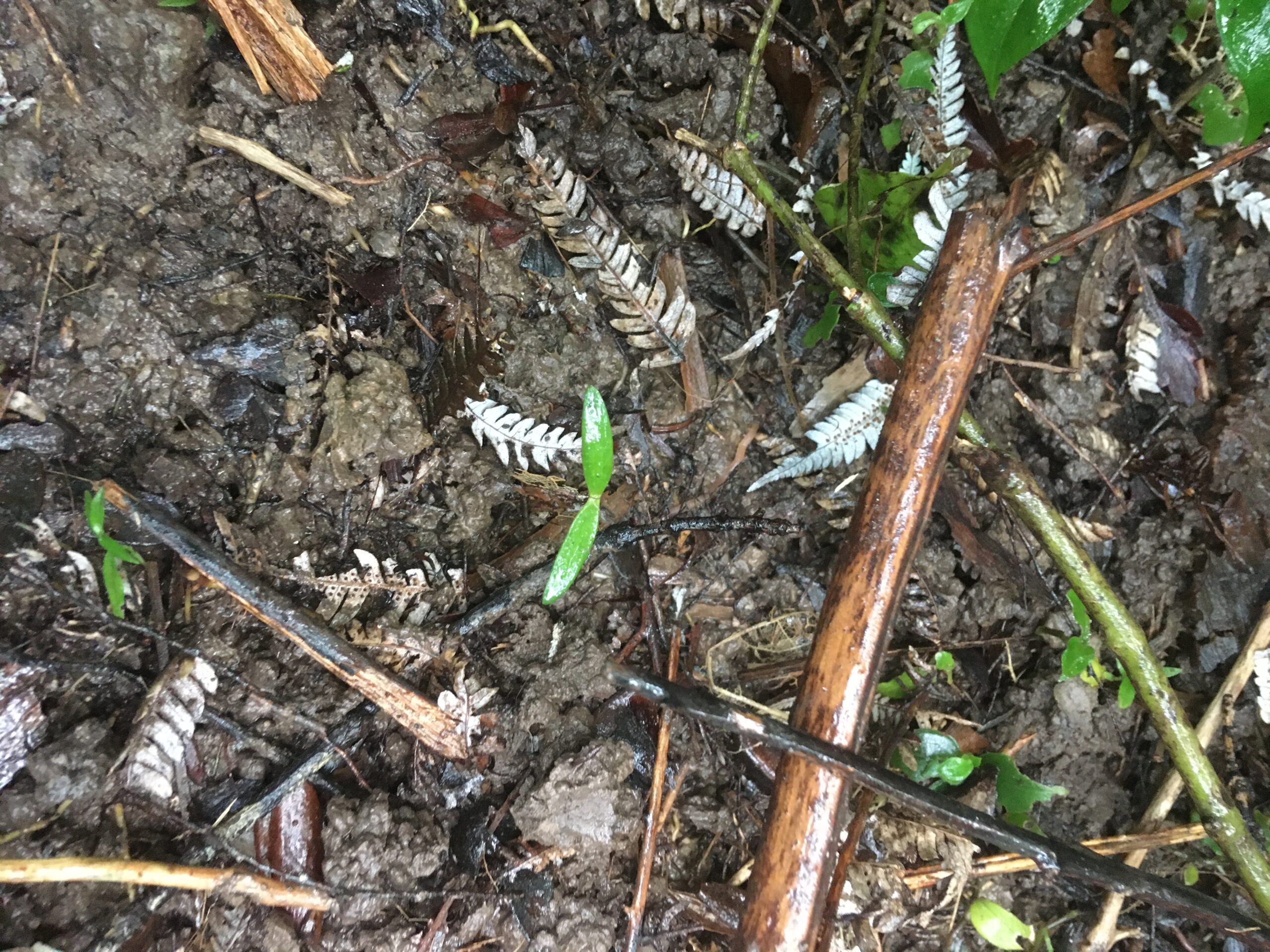
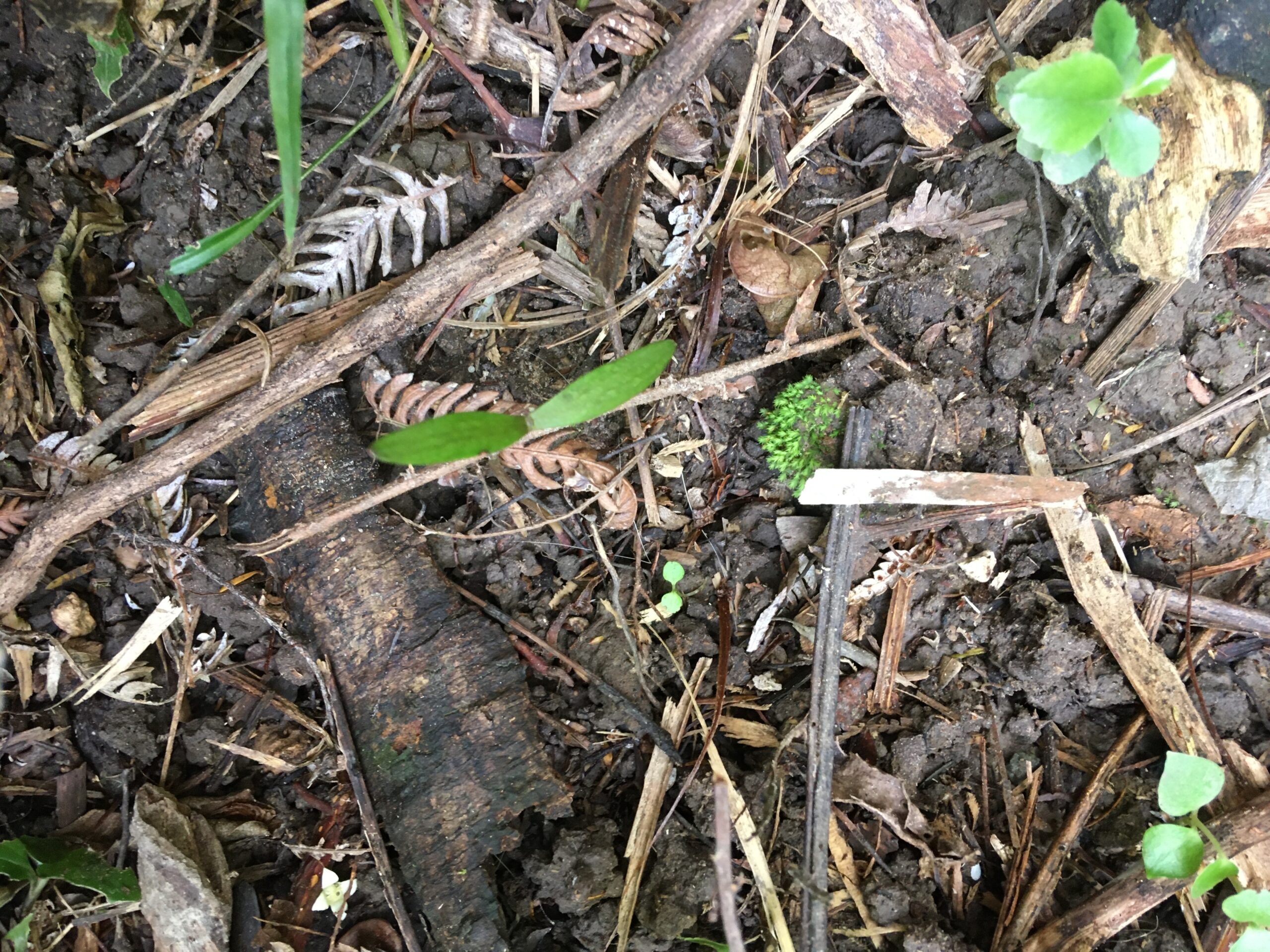

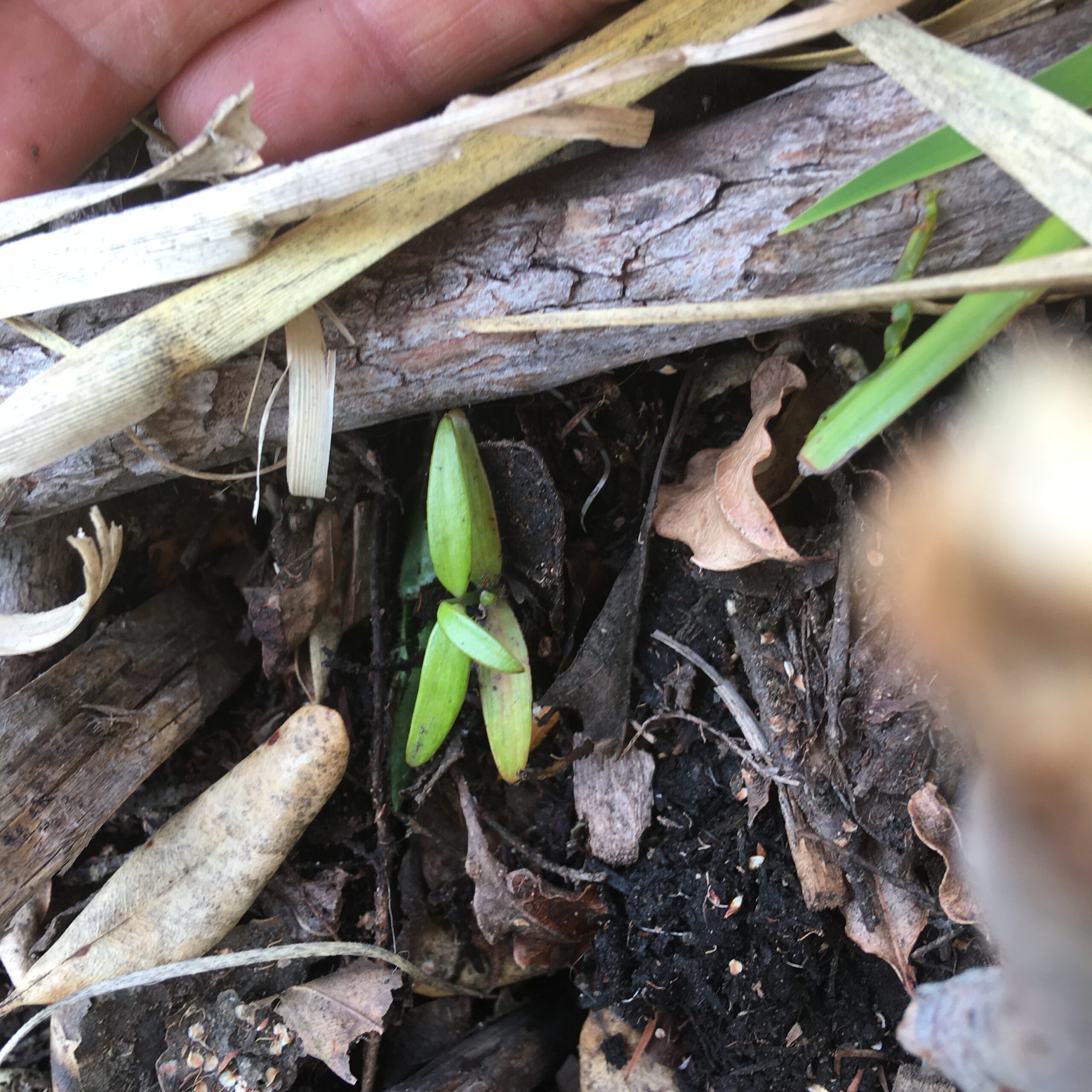
Even more gratifying to see a kauri seedling appear this autumn in the space between rotting wild ginger tubers! (No chemicals used, no digging or yanking, just our fold-down technique that rots the whole clump out over a few years).
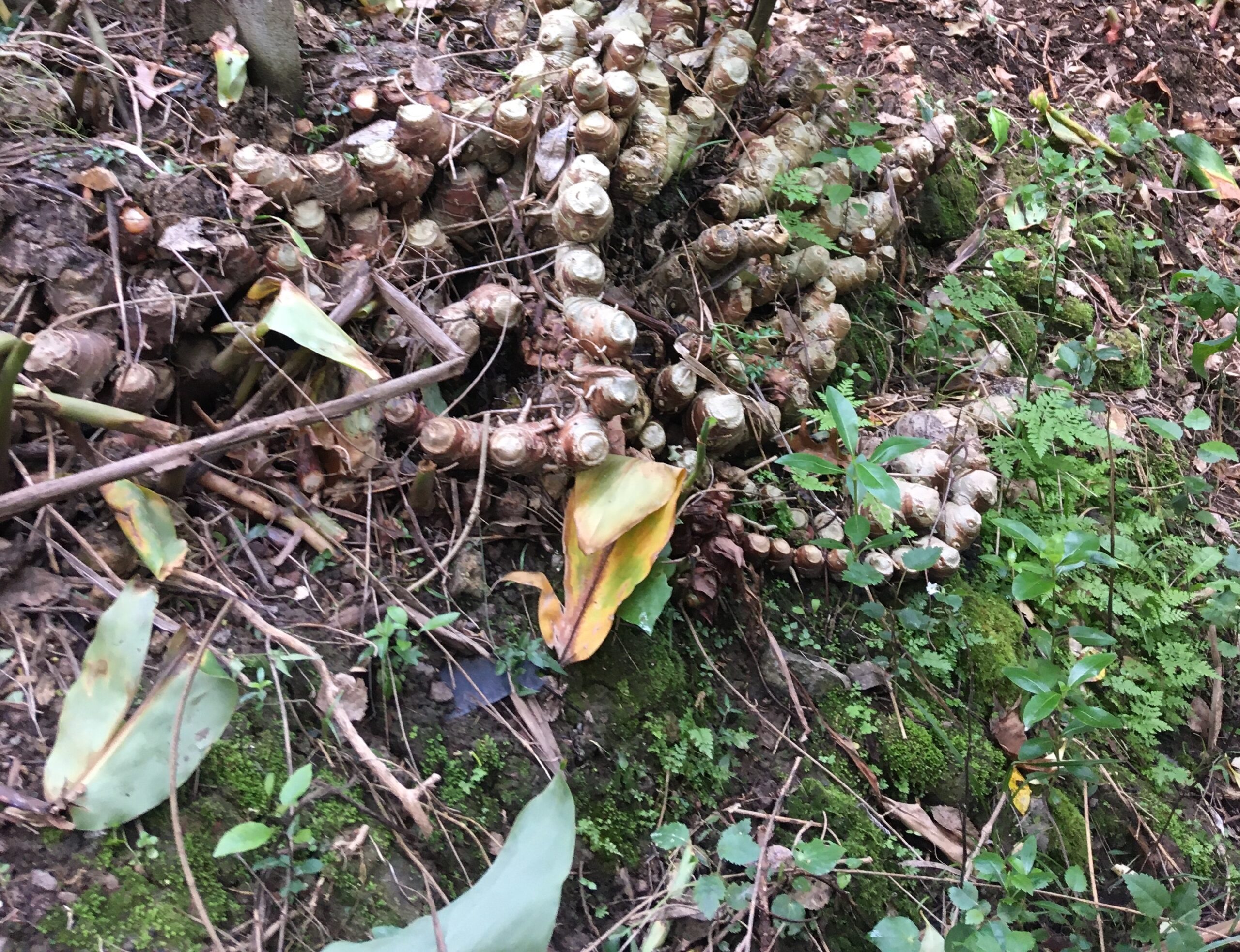
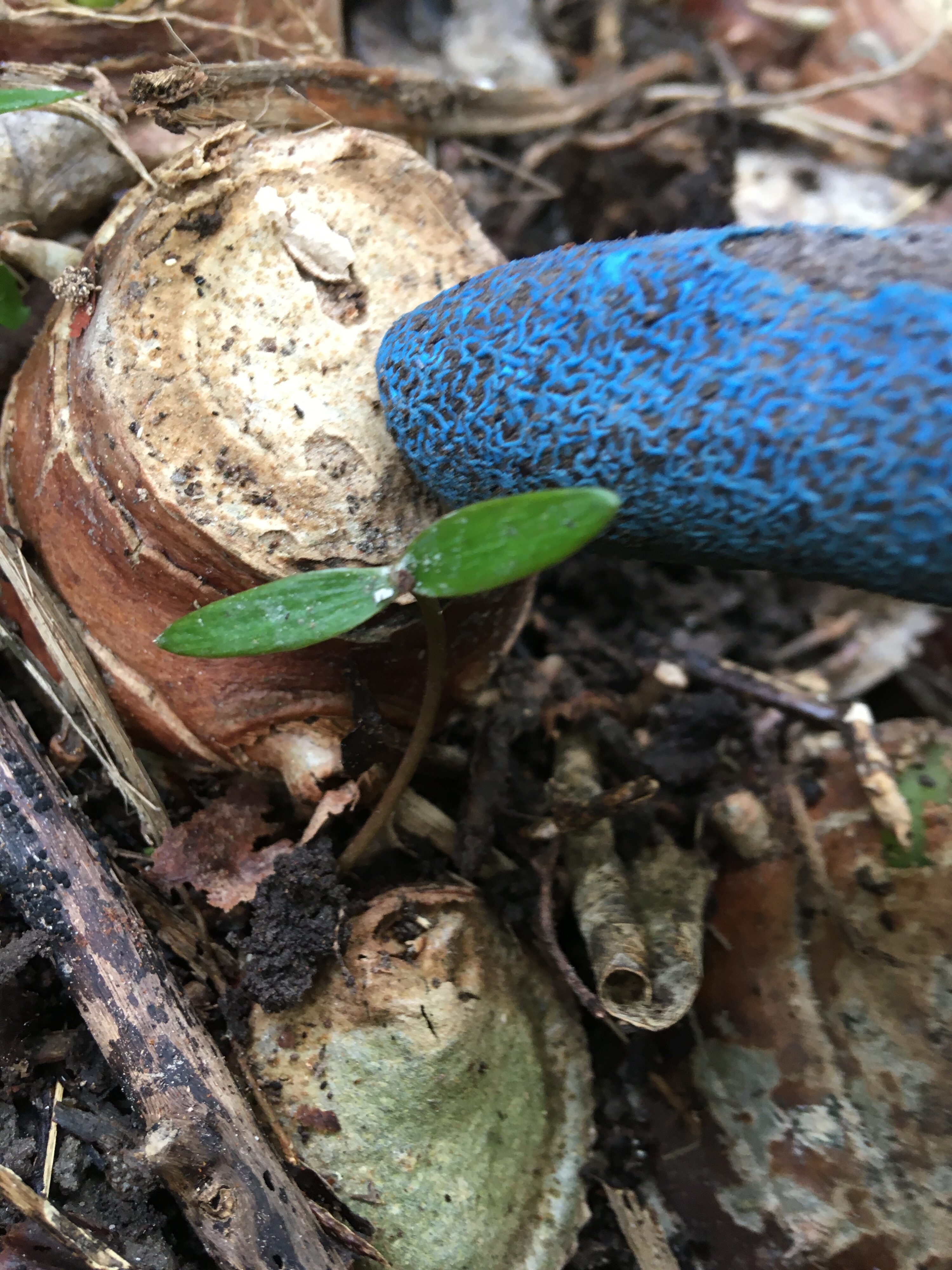
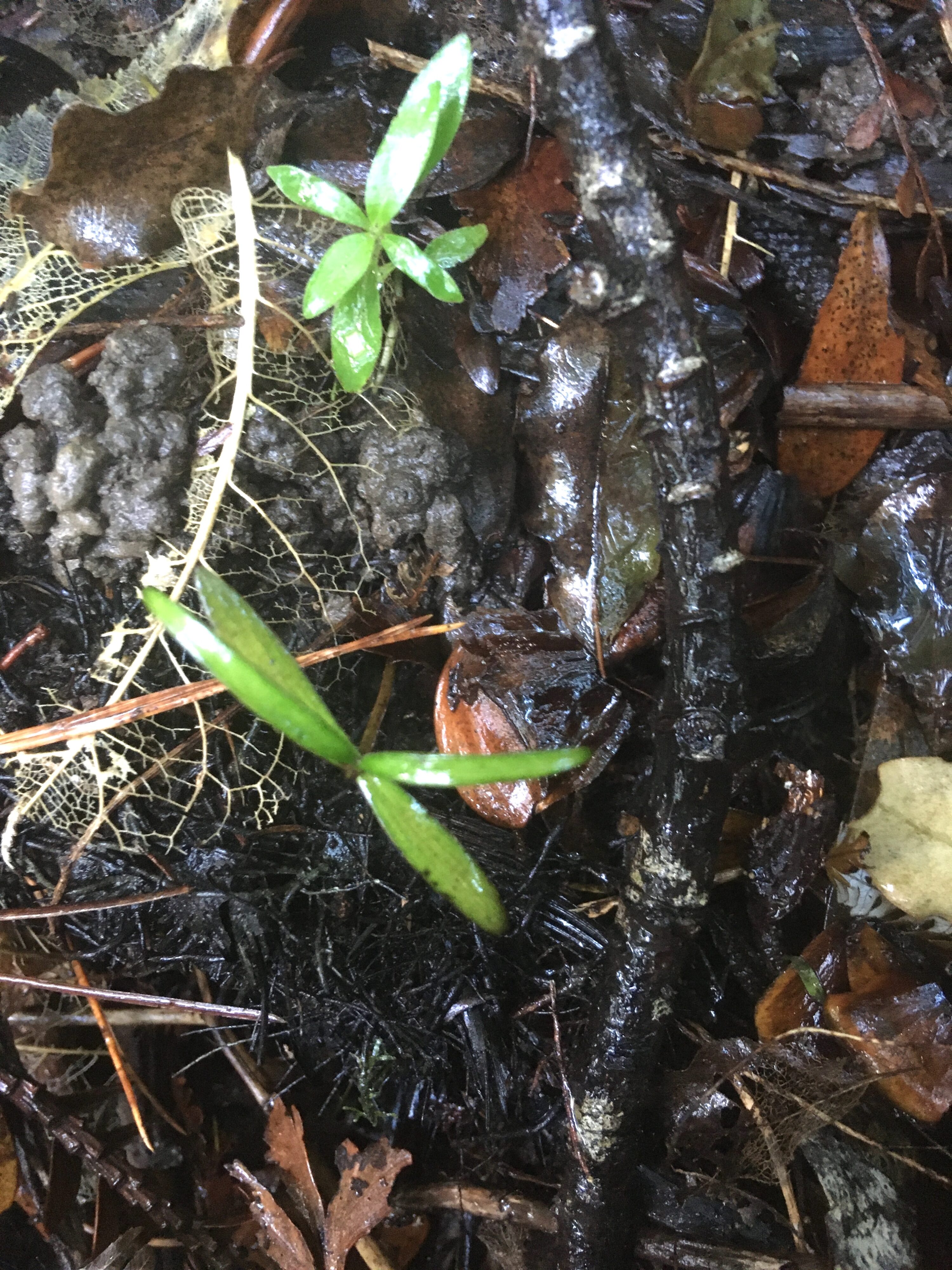
I have seen dozens of kauri seedlings appear each year in a few metres of partly shaded lawn in a garden bordering a kauri forest reserve…. to be either mown to maintain a lawn, or weeded carefully and supported with other native regeneration, to begin a new little patch of forest.
In Gahnia Grove in Eskdale Reserve, a single kauri seedling appeared in 2020 under a small shrub (a planted Cook Island Flax) only 2 metres from the mown playing field on Glenfield Rd.
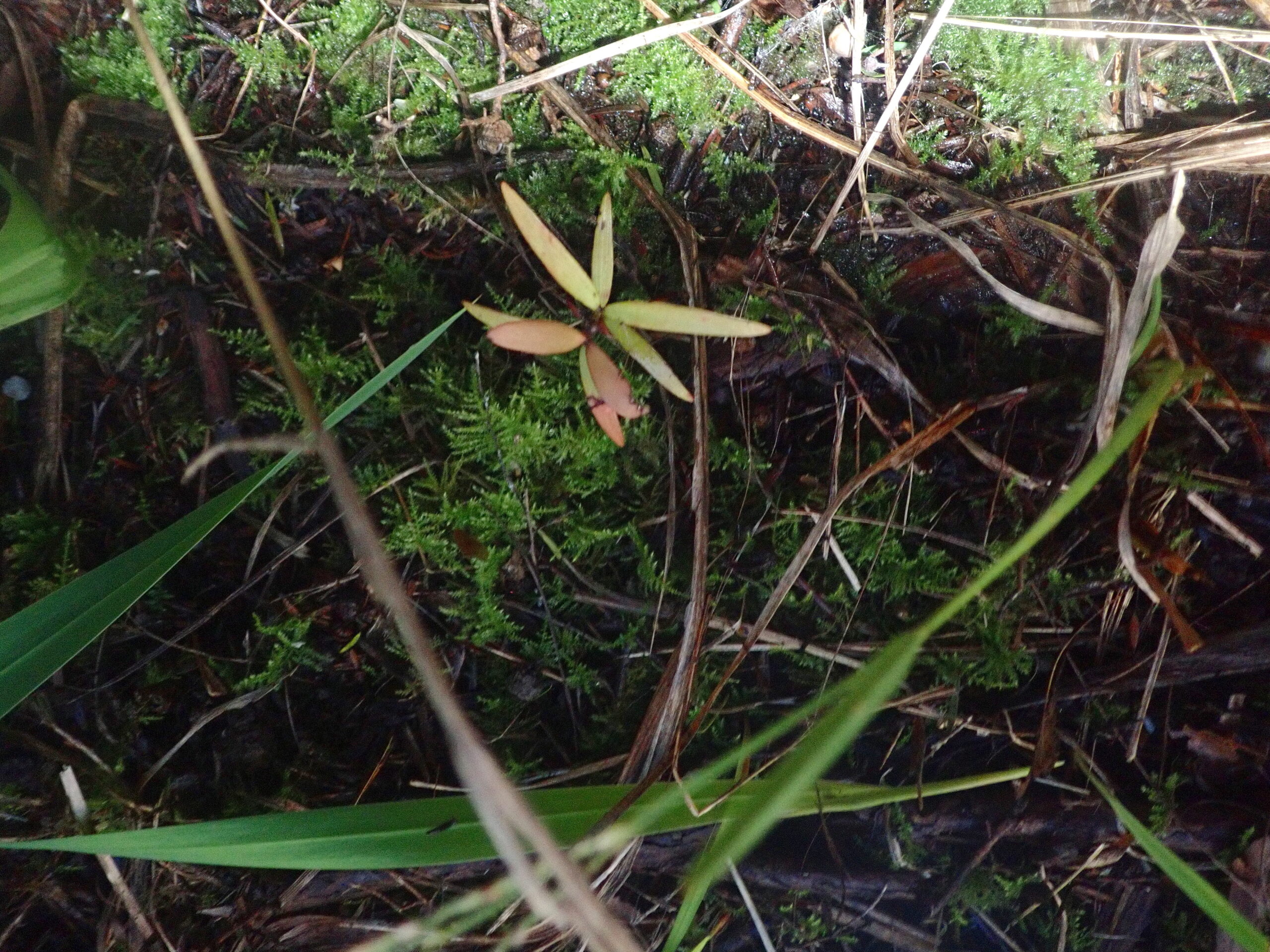
The nearest kauri old enough to bear cones is about 100m away from this seedling.
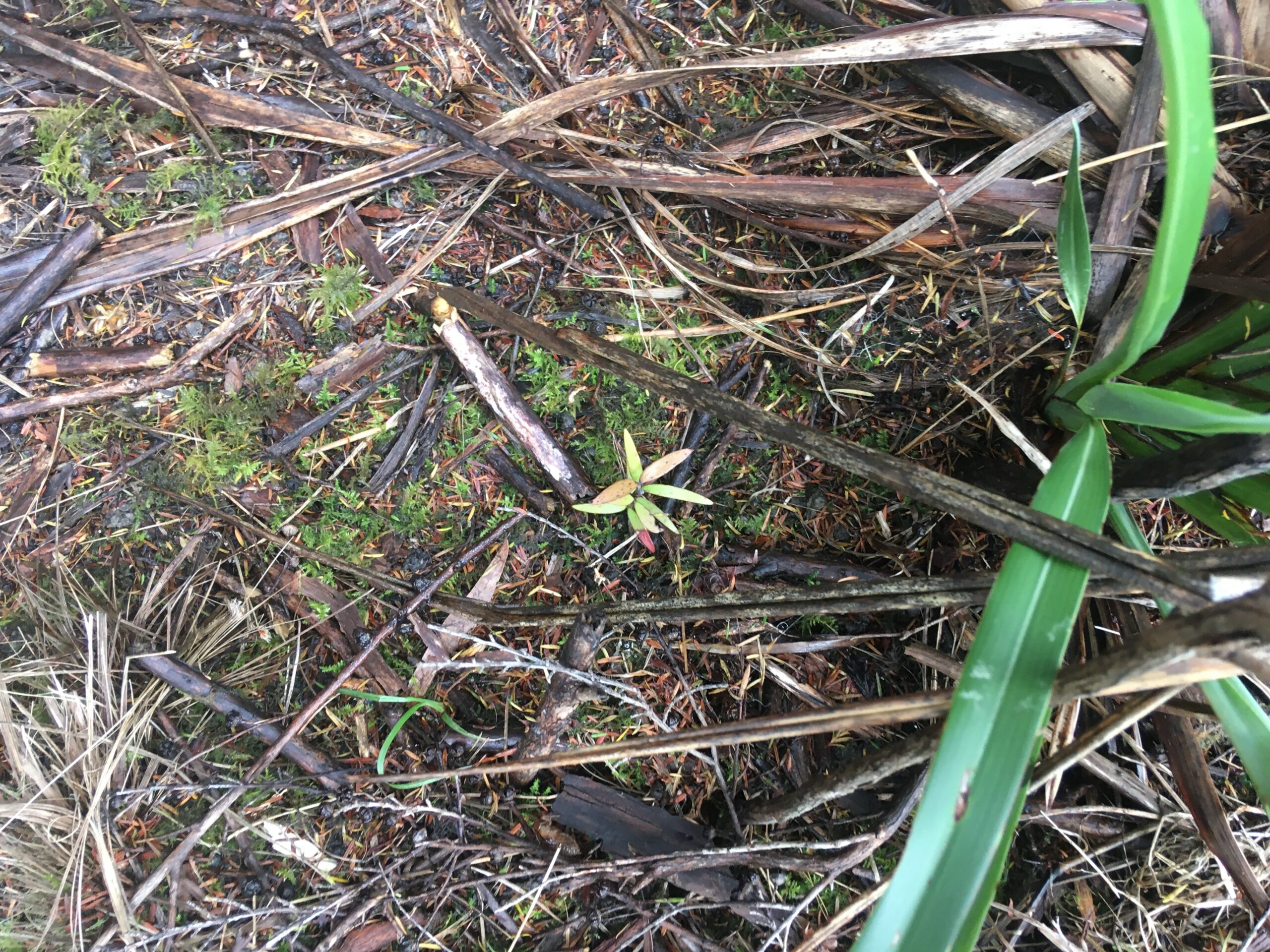
Weeding continues to protect this kauri seedling, and the native plants that nursed it while it germinated are pruned to give this enterprising kauri seedling ongoing space, shelter, light and protection from human activity.
Book a private or group assessment if you would like the hidden or unrecognised native plants revealed and identified in your garden or Reserve.
For neighbourhood groups restoring their local Reserve, it is essential to do this assessment both before and throughout planning or undertaking weed control, because without thorough knowledge of the existing habitat, more wild native vegetation is likely to be lost during weeding and planting than can be successfully established by planting.
The same applies to home gardens, where free native plants can save a lot of money!
